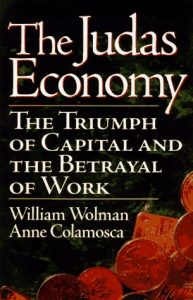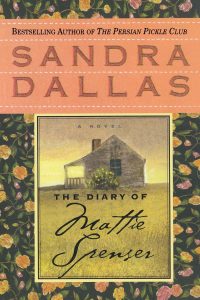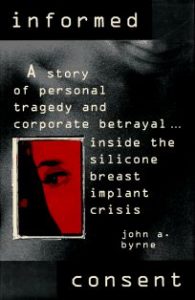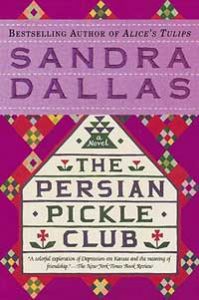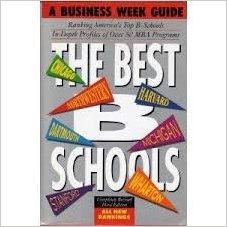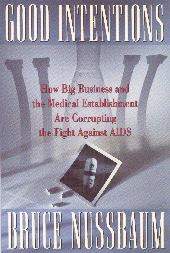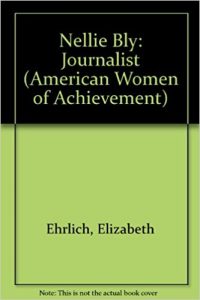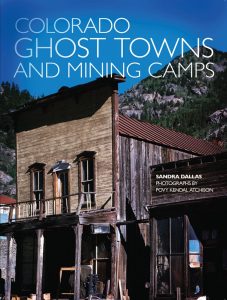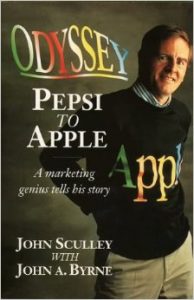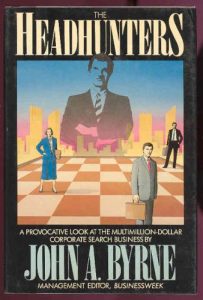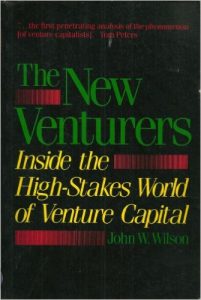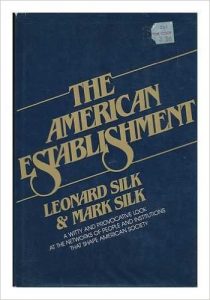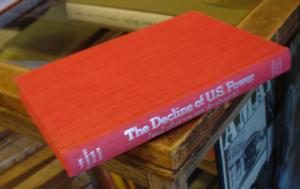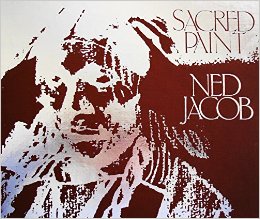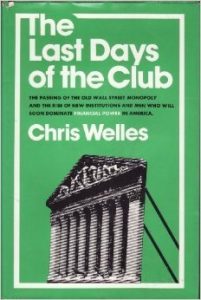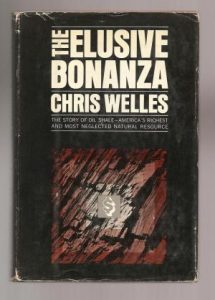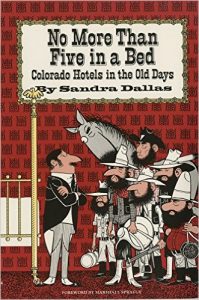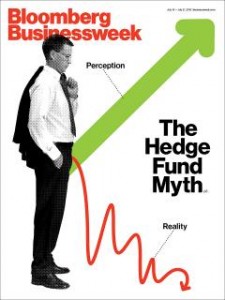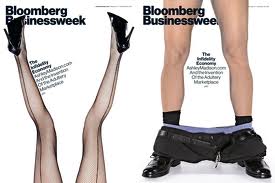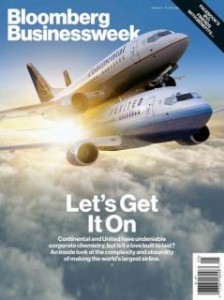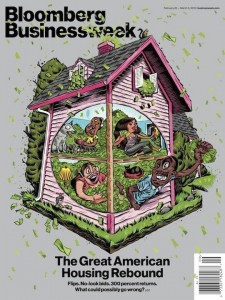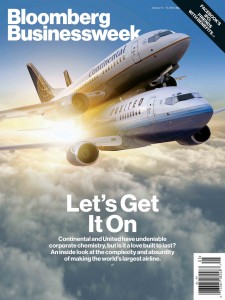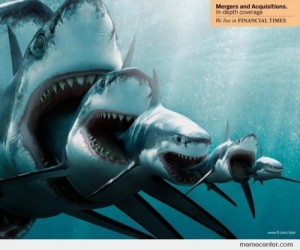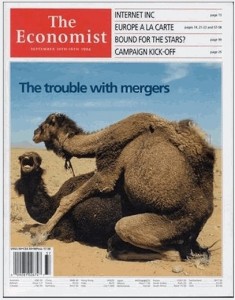For much of its recent history, BusinessWeek has been an incubator for talented writers and reporters. Under editors Steve Shepard, Steve Adler, Josh Tyrangiel, Ellen Joan Pollock, Megan Murphy and, now, Joel Weber, the place has been a literary hotbed. Many BW staffers couldn’t limit themselves to the glossy pages, but had to break into books. The remake into Bloomberg Businessweek, with its traumatic turnover in staff, stoked that flame for some, and the trend continues.
Here, in its splendid variety, is a collection of recent (and not so recent) work by this talented bunch:
2019
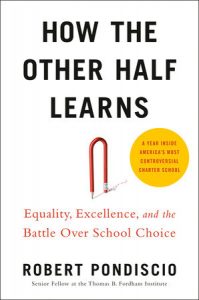 Robert Pondiscio teaches us new tricks. “Robert Pondiscio is one of our nation’s most astute observers of K-12 education. In this engaging, wise, and enormously well reported book, he trains his penetrating eye on Success Academy, the highest performing charter network in America. —Joel Klein, former chancellor of the New York City Department of Education “Engrossing, challenging, and wise, this book will change how you think about schooling and poverty.”—Daniel T. Willingham, professor of psychology, University of Virginia. “A moving and dramatic story and a minute-by-minute account of how a school actually lives…. It is arresting, informative, and compelling. A school succeeds or fails by its ethos, and reading this book qualifies as an extended visit into the inner workings of that ethos in schools that are succeeding against the odds.”—William J. Bennett, former Secretary of Education
Robert Pondiscio teaches us new tricks. “Robert Pondiscio is one of our nation’s most astute observers of K-12 education. In this engaging, wise, and enormously well reported book, he trains his penetrating eye on Success Academy, the highest performing charter network in America. —Joel Klein, former chancellor of the New York City Department of Education “Engrossing, challenging, and wise, this book will change how you think about schooling and poverty.”—Daniel T. Willingham, professor of psychology, University of Virginia. “A moving and dramatic story and a minute-by-minute account of how a school actually lives…. It is arresting, informative, and compelling. A school succeeds or fails by its ethos, and reading this book qualifies as an extended visit into the inner workings of that ethos in schools that are succeeding against the odds.”—William J. Bennett, former Secretary of Education
 Cate Holahan thrills us anew. “A psychological thriller that will keep you up all night…Get ready.” – GOOD MORNING AMERICA “Well-drawn characters… [an] absorbing page-turner.” — BOOKLIST “A great beach read for those with a penchant for scandalous secrets and gossipy suspenseful mysteries.” — LIBRARY JOURNAL “A domestic thriller that’s actually filled with lots of secrets. Some of them pretty big. ” — KIRKUS “Solidly plotted…Holahan does a fine job portraying fraying marriages and artificial friendships.” — PUBLISHERS WEEKLY
Cate Holahan thrills us anew. “A psychological thriller that will keep you up all night…Get ready.” – GOOD MORNING AMERICA “Well-drawn characters… [an] absorbing page-turner.” — BOOKLIST “A great beach read for those with a penchant for scandalous secrets and gossipy suspenseful mysteries.” — LIBRARY JOURNAL “A domestic thriller that’s actually filled with lots of secrets. Some of them pretty big. ” — KIRKUS “Solidly plotted…Holahan does a fine job portraying fraying marriages and artificial friendships.” — PUBLISHERS WEEKLY
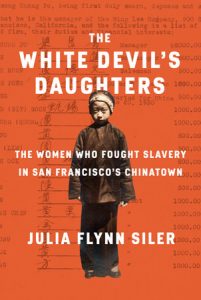 Julie Flynn Siler unearths an unsettling tale with this one. “An eye-opening account of the valiant work of a handful of Christian women against the enslavement of Asian girls in San Francisco’s Chinatown from the mid-1870s well into the next century.” — KIRKUS REVIEW “This strong story will fascinate readers interested in the history of women, immigration, and racism.” — PUBLISHERS WEEKLY “Meticulously researched and inspiring … a reminder that our political gestures and small wins accumulate and create ripple effects in ways we cannot often measure. ” — SAN FRANCISCO CHRONICLE
Julie Flynn Siler unearths an unsettling tale with this one. “An eye-opening account of the valiant work of a handful of Christian women against the enslavement of Asian girls in San Francisco’s Chinatown from the mid-1870s well into the next century.” — KIRKUS REVIEW “This strong story will fascinate readers interested in the history of women, immigration, and racism.” — PUBLISHERS WEEKLY “Meticulously researched and inspiring … a reminder that our political gestures and small wins accumulate and create ripple effects in ways we cannot often measure. ” — SAN FRANCISCO CHRONICLE
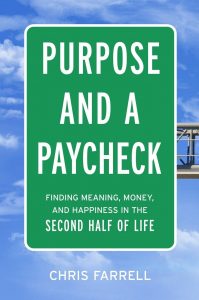 Chris Farrell counsels the aging among us. “Many prognosticators blame the aging population for the stagnating economy, arguing that as more and more people retire, relatively fewer working people will have to support growing numbers of dependent elderly. But … Chris Farrell debunks this line of thought by showing how a growing movement of elderly entrepreneurs and part-time workers are creating conditions for a stronger and more vibrant economy. Reframing aging will result in faster rates of economic growth and higher living standards for all of us, in addition to a more fulfilling and financially secure second half of life for our aging population.” — BOOKENDS & BEGINNINGS
Chris Farrell counsels the aging among us. “Many prognosticators blame the aging population for the stagnating economy, arguing that as more and more people retire, relatively fewer working people will have to support growing numbers of dependent elderly. But … Chris Farrell debunks this line of thought by showing how a growing movement of elderly entrepreneurs and part-time workers are creating conditions for a stronger and more vibrant economy. Reframing aging will result in faster rates of economic growth and higher living standards for all of us, in addition to a more fulfilling and financially secure second half of life for our aging population.” — BOOKENDS & BEGINNINGS
2018
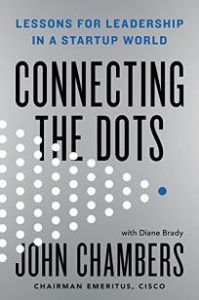 Diane Brady worked with Cisco’s John Chambers on this leadership guide. “By turns practical and insightful…” -JAMIE DIMON, JPMorgan Chase “Great leaders are distinguished by the ability to move their society or company from where it is to where it has never been. They act on the basis of a set of core principles, both intangible and inspirational. John Chambers, an accomplished executive in his own right, distills those principles in Connecting the Dots with elegance and common sense.” — HENRY KISSINGER “This is a compelling story of effective leadership through good times and bad, filled with smart lessons about innovation, team building, and managing creativity.” — JACK WELCH, former CEO of General Electric
Diane Brady worked with Cisco’s John Chambers on this leadership guide. “By turns practical and insightful…” -JAMIE DIMON, JPMorgan Chase “Great leaders are distinguished by the ability to move their society or company from where it is to where it has never been. They act on the basis of a set of core principles, both intangible and inspirational. John Chambers, an accomplished executive in his own right, distills those principles in Connecting the Dots with elegance and common sense.” — HENRY KISSINGER “This is a compelling story of effective leadership through good times and bad, filled with smart lessons about innovation, team building, and managing creativity.” — JACK WELCH, former CEO of General Electric
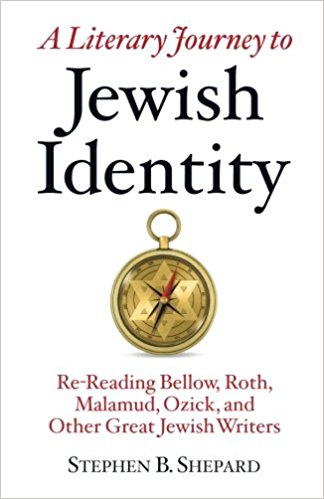 Steve Shepard again proves how multidimensional a journalist — a business journalist — can be. “This is a really thoughtful, thought-provoking literary memoir, the story of a really accomplished, literary guy who, with the help of his book group of other really accomplished, literary guys — all of them of a certain age — work their way through the Mount Rushmore of American Jewish writers. Plus Updike, who granted a sort of honorary Jewishness. Some of the chapters based on book-group discussions, such as ‘Was Willy Loman Jewish?’ are the sort of loose, entertaining discussion you might hear from younger people debating who would win in a fight, Batman or Superman. (Except there is a right answer for that one.) Stephen Shepard and his book buddies chew on all sorts of questions that are more personal and more meaningful: how to lead an ethical life, how to find your way back to the religion and/or culture after decades in what Shepard calls his ‘personal diaspora,’ how to think of the Holocaust, and how to life a life promoting justice and equality. An underlying theme, of course, is the tension between relevance and aging.”— TIM HARPER, Amazon
Steve Shepard again proves how multidimensional a journalist — a business journalist — can be. “This is a really thoughtful, thought-provoking literary memoir, the story of a really accomplished, literary guy who, with the help of his book group of other really accomplished, literary guys — all of them of a certain age — work their way through the Mount Rushmore of American Jewish writers. Plus Updike, who granted a sort of honorary Jewishness. Some of the chapters based on book-group discussions, such as ‘Was Willy Loman Jewish?’ are the sort of loose, entertaining discussion you might hear from younger people debating who would win in a fight, Batman or Superman. (Except there is a right answer for that one.) Stephen Shepard and his book buddies chew on all sorts of questions that are more personal and more meaningful: how to lead an ethical life, how to find your way back to the religion and/or culture after decades in what Shepard calls his ‘personal diaspora,’ how to think of the Holocaust, and how to life a life promoting justice and equality. An underlying theme, of course, is the tension between relevance and aging.”— TIM HARPER, Amazon
2017
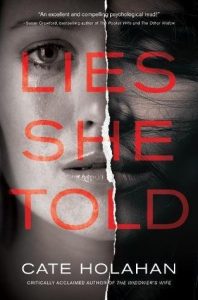 Cate Holahan thrills again. “A suffocating double nightmare…‘To be a writer is to be a life thief.’”― KIRKUS REVIEW “Recommended for anyone who enjoys Paula Hawkins or Gillian Flynn, primarily because it’s better.” — LIBRARY JOURNAL “Engrossing…Holahan keeps the suspense high…until the surprising denouement.” ― PUBLISHERS WEEKLY “Pure, binge-worthy entertainment…readers looking for an addictive, layered suspense novel will feel right at home in Holahan’s world.” — CRIME BY THE BOOK
Cate Holahan thrills again. “A suffocating double nightmare…‘To be a writer is to be a life thief.’”― KIRKUS REVIEW “Recommended for anyone who enjoys Paula Hawkins or Gillian Flynn, primarily because it’s better.” — LIBRARY JOURNAL “Engrossing…Holahan keeps the suspense high…until the surprising denouement.” ― PUBLISHERS WEEKLY “Pure, binge-worthy entertainment…readers looking for an addictive, layered suspense novel will feel right at home in Holahan’s world.” — CRIME BY THE BOOK
 Chris Roush educates us anew. “This book provides excellent, down-to-earth information —and wisdom—on teaching. Everyone who teaches would improve by reading it.”—RICHARD COLE, University of North Carolina at Chapel Hill “What a treasure trove of tips, guidance, examples, quotes, resources and, above all, encouragement for today’s journalism and mass communication educators from some of the best teachers in the field.”— JENNIFER D. GREER, University of Alabama “Mass communication instruction is becoming more challenging because of unprecedented changes in the professions we serve, the technology we use, and the students we engage in the learning process. This publication is timely and needed.”— JUAN-CARLOS MOLLEDA, University of Oregon
Chris Roush educates us anew. “This book provides excellent, down-to-earth information —and wisdom—on teaching. Everyone who teaches would improve by reading it.”—RICHARD COLE, University of North Carolina at Chapel Hill “What a treasure trove of tips, guidance, examples, quotes, resources and, above all, encouragement for today’s journalism and mass communication educators from some of the best teachers in the field.”— JENNIFER D. GREER, University of Alabama “Mass communication instruction is becoming more challenging because of unprecedented changes in the professions we serve, the technology we use, and the students we engage in the learning process. This publication is timely and needed.”— JUAN-CARLOS MOLLEDA, University of Oregon
 Catherine T. Yang translated this 1975 work by her father, the late Shu-Chin Yang. It commemorates the death, in 1937, of his brother. “Such a fascinating perspective about this terrible period in early WWII. The mystery of what happened to a brother who effectively disappeared and how it persistently affects the family is very moving. The letters from those that knew and came across Dapeng in the appendix are wonderful in pulling together the final proud story of a military warrior.” — AMY LeSUEUR, Amazon ” Gracefully told story of the thoughts and actions of brothers during 1930s China as Japanese troops were taking over. Full of first person accounts, this is also an important historical document.” — KUMIKO MAKIHARA, Amazon
Catherine T. Yang translated this 1975 work by her father, the late Shu-Chin Yang. It commemorates the death, in 1937, of his brother. “Such a fascinating perspective about this terrible period in early WWII. The mystery of what happened to a brother who effectively disappeared and how it persistently affects the family is very moving. The letters from those that knew and came across Dapeng in the appendix are wonderful in pulling together the final proud story of a military warrior.” — AMY LeSUEUR, Amazon ” Gracefully told story of the thoughts and actions of brothers during 1930s China as Japanese troops were taking over. Full of first person accounts, this is also an important historical document.” — KUMIKO MAKIHARA, Amazon
 Roben Farzad tells the tale of a Mutiny, a most unusual hotel. “Hotel Scarface is a journey into the surreal. The book sizzles with exquisitely detailed reporting and a fast-paced narrative that thrusts the reader right into the middle of Miami’s cocaine madness.” — ASHLEE VANCE, author. “Roben Farzad’s electric prose brilliantly captures boomtown Miami in its coke-fueled heyday. The city has grown up since then, but beneath our gilded, 21st-century veneer lurks the same menacing spirit of the kingpins, caudillos and straight-up whack-jobs who ruled the Mutiny.” — NICHOLAS NEHAMAS, Miami Herald reporter. “Thought I was reading a Carl Hiaasen novel. Then I realized it was NON-fiction. Hotel Scarface is to Miami what ‘Narcos’ is to Colombia.” — MICHELLE CARUSO-CABRERA, CNBC’s Chief International Correspondent
Roben Farzad tells the tale of a Mutiny, a most unusual hotel. “Hotel Scarface is a journey into the surreal. The book sizzles with exquisitely detailed reporting and a fast-paced narrative that thrusts the reader right into the middle of Miami’s cocaine madness.” — ASHLEE VANCE, author. “Roben Farzad’s electric prose brilliantly captures boomtown Miami in its coke-fueled heyday. The city has grown up since then, but beneath our gilded, 21st-century veneer lurks the same menacing spirit of the kingpins, caudillos and straight-up whack-jobs who ruled the Mutiny.” — NICHOLAS NEHAMAS, Miami Herald reporter. “Thought I was reading a Carl Hiaasen novel. Then I realized it was NON-fiction. Hotel Scarface is to Miami what ‘Narcos’ is to Colombia.” — MICHELLE CARUSO-CABRERA, CNBC’s Chief International Correspondent
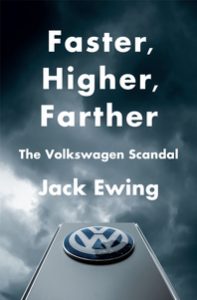 Jack Ewing digs deep in this corporate dissection. “A fascinating exposé….Ewing’s compelling prose makes his book read like entertainment more than education and the story of Volkswagen’s fall…is a study in corporate hubris.” — PUBLISHERS WEEKLY
Jack Ewing digs deep in this corporate dissection. “A fascinating exposé….Ewing’s compelling prose makes his book read like entertainment more than education and the story of Volkswagen’s fall…is a study in corporate hubris.” — PUBLISHERS WEEKLY
“A shocking, sobering story―and, given the current antiregulatory mood, one likely to be repeated.” — KIRKUS
2016
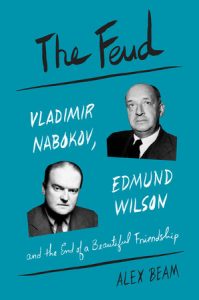 Alex Beam likes a good fight. “Beam wears his learning lightly. He has a keen sense of the absurd and is mischievous but not malicious in exposing the foibles of these frenemies. He also, while he’s at it, has some Nabokovian fun as he laces his narrative with wordplay and faux-scholarly flourishes…his book mostly leaves you asking yourself how prideful and pig headed even the smartest men can be. — MICHAEL UPCHURCH, The Boston Globe. “Throughout, [Beam] is not only an amiable guide, but also proves adept concerning Russian history and literature, and Pushkin’s famous novel. (Beam was the Globe’s Moscow correspondent earlier in his career.)” — JOHN WINTERS, WBUR.org “As Alex Beam explains in ‘The Feud,’ his elegant and intimate account of the rise and fall of the Wilson-Nabokov friendship, it all began with Pushkin.” — DOMINIC GREEN, Wall Street Journal.
Alex Beam likes a good fight. “Beam wears his learning lightly. He has a keen sense of the absurd and is mischievous but not malicious in exposing the foibles of these frenemies. He also, while he’s at it, has some Nabokovian fun as he laces his narrative with wordplay and faux-scholarly flourishes…his book mostly leaves you asking yourself how prideful and pig headed even the smartest men can be. — MICHAEL UPCHURCH, The Boston Globe. “Throughout, [Beam] is not only an amiable guide, but also proves adept concerning Russian history and literature, and Pushkin’s famous novel. (Beam was the Globe’s Moscow correspondent earlier in his career.)” — JOHN WINTERS, WBUR.org “As Alex Beam explains in ‘The Feud,’ his elegant and intimate account of the rise and fall of the Wilson-Nabokov friendship, it all began with Pushkin.” — DOMINIC GREEN, Wall Street Journal.
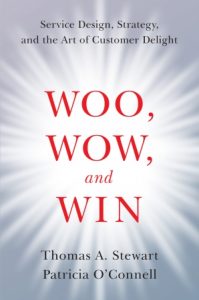 Patricia O’Connell coauthors some sage counsel. “Woo, Wow, and Win is a roadmap for success in a landscape being rapidly transformed by technology and entrepreneurship.” — STEVE CASE “This is the book that service business executives have been waiting for. Woo, Wow, and Win shows how to make the connection between strategic opportunity, business design, and customer satisfaction. The principles of service design are the pathway to a more profitable future–and happier customers.” — RAM CHARAN “Tom Stewart’s and Patricia O’Connell’s exceptional book is a convincing testimony to the power of having service strategies that are as unique and differentiated as product strategies. It provides deep insights into how you can develop your customers and retain them with superior service. It’s a must read!” — BILL GEORGE, Senior Fellow at Harvard Business School, former Chair & CEO of Medtronic
Patricia O’Connell coauthors some sage counsel. “Woo, Wow, and Win is a roadmap for success in a landscape being rapidly transformed by technology and entrepreneurship.” — STEVE CASE “This is the book that service business executives have been waiting for. Woo, Wow, and Win shows how to make the connection between strategic opportunity, business design, and customer satisfaction. The principles of service design are the pathway to a more profitable future–and happier customers.” — RAM CHARAN “Tom Stewart’s and Patricia O’Connell’s exceptional book is a convincing testimony to the power of having service strategies that are as unique and differentiated as product strategies. It provides deep insights into how you can develop your customers and retain them with superior service. It’s a must read!” — BILL GEORGE, Senior Fellow at Harvard Business School, former Chair & CEO of Medtronic
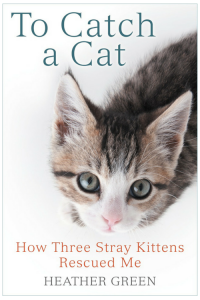 Heather Green scratches an itch with this memoir, her debut book. It “… is about Heather’s venture into the world of cat rescue, which I learned is a place full of caring, careful people who are trying to make our neighborhoods safe for feral cats, while at the same time making it possible for them to transition from the wild into loving homes. While taming three feral kittens (and ultimately their mother), Heather learns the value of patience and of nurturing relationships.” — ARLENE WEINTRAUB, author. “This marvelous book is much more than a story about cats. Yes, anyone who has loved cats will empathize with and be delighted by the author’s challenging, humorous, surprising, and touching experiences as she and her boyfriend are lured into the crazy and deeply rewarding world of cat rescue. But, the artfully woven additional dimensions of this work make it both compelling and inspirational. What in life feels right, what matters most, and do we dare take the bold steps to seize them?” — PAMELA L. WHITELOCK, Amazon “What a great read. The author did a wonderful job of giving the kittens and their mother personalities so strong that you felt you were right there with them. Combining kittens and romance that built throughout the book was quite a feat.” — NANCY CAROLYN, Amazon
Heather Green scratches an itch with this memoir, her debut book. It “… is about Heather’s venture into the world of cat rescue, which I learned is a place full of caring, careful people who are trying to make our neighborhoods safe for feral cats, while at the same time making it possible for them to transition from the wild into loving homes. While taming three feral kittens (and ultimately their mother), Heather learns the value of patience and of nurturing relationships.” — ARLENE WEINTRAUB, author. “This marvelous book is much more than a story about cats. Yes, anyone who has loved cats will empathize with and be delighted by the author’s challenging, humorous, surprising, and touching experiences as she and her boyfriend are lured into the crazy and deeply rewarding world of cat rescue. But, the artfully woven additional dimensions of this work make it both compelling and inspirational. What in life feels right, what matters most, and do we dare take the bold steps to seize them?” — PAMELA L. WHITELOCK, Amazon “What a great read. The author did a wonderful job of giving the kittens and their mother personalities so strong that you felt you were right there with them. Combining kittens and romance that built throughout the book was quite a feat.” — NANCY CAROLYN, Amazon
 For Chris Roush, the third time should be as charming as the first two. I will use this text in class, as I have the prior editions, and proudly note I chipped in the preface on this update. “Chris Roush demystifies financial storytelling, and with insight from leading journalists helps reporters figure out when a company’s dollars make sense―and when they don’t. Show Me the Money prepares even the math-phobic reporter to write business news that matters to readers from Main Street to Wall Street.” – MELITA M.GARZA, Texas Christian University “Show Me the Money isn’t just a thorough textbook – it’s an essential reference that should be on the desk of any journalist who may ever have to write about business and finance.” – JOHN KROLL, Kent State University
For Chris Roush, the third time should be as charming as the first two. I will use this text in class, as I have the prior editions, and proudly note I chipped in the preface on this update. “Chris Roush demystifies financial storytelling, and with insight from leading journalists helps reporters figure out when a company’s dollars make sense―and when they don’t. Show Me the Money prepares even the math-phobic reporter to write business news that matters to readers from Main Street to Wall Street.” – MELITA M.GARZA, Texas Christian University “Show Me the Money isn’t just a thorough textbook – it’s an essential reference that should be on the desk of any journalist who may ever have to write about business and finance.” – JOHN KROLL, Kent State University
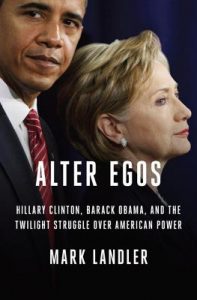 Mark Landler waxes political. “A superb journalist has brought us a vivid, page-turning, and revelatory account of the relationship between Barack Obama and Hillary Clinton, as well as of their statecraft …. a signal contribution to the national debate over who should be the next American president.”– MICHAEL BESCHLOSS, author. “Mark Landler, one of the best reporters working in Washington today, delivers an inside account of Hillary Clinton’s relationship with Barack Obama that brims with insight and high-level intrigue. It’s both fun to read and eye-opening.” — JANE MAYER, author. “An incredibly important book, timely and deeply revelatory. Landler’s brilliant reporting reveals a Barack Obama ever skeptical of establishment wisdom, and a Hillary Clinton driven by ‘inner hawk’ instincts. This is an extraordinary tale of two formidable personalities locked in an alliance who have competing visions of America’s foreign policy.” — KAI BIRD, author.
Mark Landler waxes political. “A superb journalist has brought us a vivid, page-turning, and revelatory account of the relationship between Barack Obama and Hillary Clinton, as well as of their statecraft …. a signal contribution to the national debate over who should be the next American president.”– MICHAEL BESCHLOSS, author. “Mark Landler, one of the best reporters working in Washington today, delivers an inside account of Hillary Clinton’s relationship with Barack Obama that brims with insight and high-level intrigue. It’s both fun to read and eye-opening.” — JANE MAYER, author. “An incredibly important book, timely and deeply revelatory. Landler’s brilliant reporting reveals a Barack Obama ever skeptical of establishment wisdom, and a Hillary Clinton driven by ‘inner hawk’ instincts. This is an extraordinary tale of two formidable personalities locked in an alliance who have competing visions of America’s foreign policy.” — KAI BIRD, author.
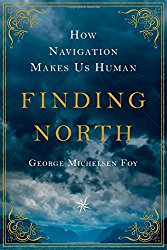 George Michelsen Foy helps us find the way home. “GPS’s cultural and psychological significance is at the core of George Michelsen Foy’s Finding North…[and] the questions he worries at are important ones.” — WALL STREET JOURNAL “Foy’s strongest moments happen when he taps into the internal map, through his own personal, sensory-based history with a particular place…[a] great storyteller.” — OUTSIDE “Deep waters and deep thoughts fill these pages. With skillful prose and insight, Foy’s account of the different aspects of navigation packs a powerful punch.” ― PUBLISHERS WEEKLY
George Michelsen Foy helps us find the way home. “GPS’s cultural and psychological significance is at the core of George Michelsen Foy’s Finding North…[and] the questions he worries at are important ones.” — WALL STREET JOURNAL “Foy’s strongest moments happen when he taps into the internal map, through his own personal, sensory-based history with a particular place…[a] great storyteller.” — OUTSIDE “Deep waters and deep thoughts fill these pages. With skillful prose and insight, Foy’s account of the different aspects of navigation packs a powerful punch.” ― PUBLISHERS WEEKLY
 Cate Holahan thrills us anew. “One of those rare thrillers that really will keep you reading all night.” — KIRKUS (starred review) “Holahan once again creates a compelling heroine who can tap into bottomless reserves of strength when push comes to shove. A fast read for domestic-suspense fans.” — BOOKLIST “In this chilling cat-and-mouse tale… Holahan keeps the action going.” — PUBLISHERS WEEKLY
Cate Holahan thrills us anew. “One of those rare thrillers that really will keep you reading all night.” — KIRKUS (starred review) “Holahan once again creates a compelling heroine who can tap into bottomless reserves of strength when push comes to shove. A fast read for domestic-suspense fans.” — BOOKLIST “In this chilling cat-and-mouse tale… Holahan keeps the action going.” — PUBLISHERS WEEKLY
Cate Holahan offers some mysterious plot twists. “Readers are sur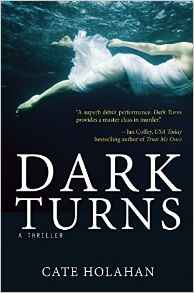 e to be reminded of various movies with ballet at their core: The Turning Point, Black Swan, and Center Stage come to mind. As one would expect, Dark Turns goes to some of the darker places those films also explored, but not in a way that never feels derivative.” — BOLO BOOKS “Recommended read for Young Adult and Fiction fans that like a bit of darkness with their light. This one drives you forward with the character connections forged but keeps you guessing as to where it will all land.” — SATISFACTION FOR INSATIABLE READERS
e to be reminded of various movies with ballet at their core: The Turning Point, Black Swan, and Center Stage come to mind. As one would expect, Dark Turns goes to some of the darker places those films also explored, but not in a way that never feels derivative.” — BOLO BOOKS “Recommended read for Young Adult and Fiction fans that like a bit of darkness with their light. This one drives you forward with the character connections forged but keeps you guessing as to where it will all land.” — SATISFACTION FOR INSATIABLE READERS
 Arlene Weintraub is barking up the right tree. “Anyone interested in translational science, innovative developments in cancer research, or treating pets with cancer will find this book a valuable resource….Readers will share Weintraub’s growing appreciation for the canine and feline subjects (and their owners) who are helping to advance cancer research.” — PUBLISHERS WEEKLY “Honest reporting . . . [A] useful and credible book.” — BLOOMBERG BUSINESSWEEK “Beautifully written and superbly researched, Heal makes a compelling case for increased collaboration between the human and veterinary medical fields. Engaging and emotional, Heal is an important book for scientists, animal lovers and anyone interested in the vulnerabilities we humans share with animals.” — BARBARA NATTERSON-HOROWITZ, MD and KATHRYN BOWERS, co-authors of Zoobiquity
Arlene Weintraub is barking up the right tree. “Anyone interested in translational science, innovative developments in cancer research, or treating pets with cancer will find this book a valuable resource….Readers will share Weintraub’s growing appreciation for the canine and feline subjects (and their owners) who are helping to advance cancer research.” — PUBLISHERS WEEKLY “Honest reporting . . . [A] useful and credible book.” — BLOOMBERG BUSINESSWEEK “Beautifully written and superbly researched, Heal makes a compelling case for increased collaboration between the human and veterinary medical fields. Engaging and emotional, Heal is an important book for scientists, animal lovers and anyone interested in the vulnerabilities we humans share with animals.” — BARBARA NATTERSON-HOROWITZ, MD and KATHRYN BOWERS, co-authors of Zoobiquity
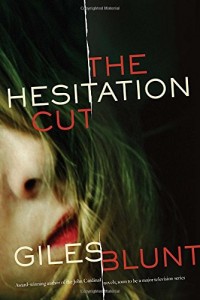 Giles Blunt goes for the jugular again.”Blunt stands as a master craftsman who shows us not only darkness, but also decency.” — PUBLISHERS WEEKLY “Blunt writes with the flashing grace of an ice skater skimming over a frozen pond.” — THE NEW YORK TIMES BOOK REVIEW “Another tense, engrossing read from one of Canada’s top crime writers. Blunt’s new tale of obsessive love leisurely grabs hold and doesn’t let go, from the pastoral innocence of the first few pages to the climactic twist of events. A solid book for a late summer cottage getaway. Just remember to glance over your shoulder once in awhile.” — RANDALL PERRY
Giles Blunt goes for the jugular again.”Blunt stands as a master craftsman who shows us not only darkness, but also decency.” — PUBLISHERS WEEKLY “Blunt writes with the flashing grace of an ice skater skimming over a frozen pond.” — THE NEW YORK TIMES BOOK REVIEW “Another tense, engrossing read from one of Canada’s top crime writers. Blunt’s new tale of obsessive love leisurely grabs hold and doesn’t let go, from the pastoral innocence of the first few pages to the climactic twist of events. A solid book for a late summer cottage getaway. Just remember to glance over your shoulder once in awhile.” — RANDALL PERRY
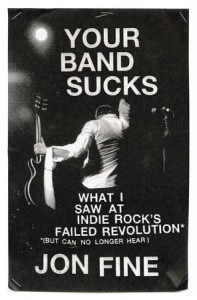 Jon Fine finds memoir to be his metier. “A deft stylist, Fine captures the uncompromising drive of 20-something men on a mission to change the world through music played at high volume.” — PUBLISHERS WEEKLY “The short shelf of great books on indie rock adds another—an unlikely memoir about an obscure band that somehow found demand for its reunion in the Internet age . . . ‘I don’t regret a thing,’ writes Fine, and neither will readers who live vicariously through the author’s eyes and memory.”
Jon Fine finds memoir to be his metier. “A deft stylist, Fine captures the uncompromising drive of 20-something men on a mission to change the world through music played at high volume.” — PUBLISHERS WEEKLY “The short shelf of great books on indie rock adds another—an unlikely memoir about an obscure band that somehow found demand for its reunion in the Internet age . . . ‘I don’t regret a thing,’ writes Fine, and neither will readers who live vicariously through the author’s eyes and memory.”
— KIRKUS REVIEWS (starred)
 Stephen Adler and his bride, Lisa Grunwald, join forces again. “Such an entertaining romp through marriage. I wish I’d had it before I wed and during.” — BECKY, Goodreads “Funny, wise, provocative and essential words about why marriage works and why it doesn’t. These authors have scoured literature and pop culture and come up with remarkable insights and history.” — BETSY, Goodreads
Stephen Adler and his bride, Lisa Grunwald, join forces again. “Such an entertaining romp through marriage. I wish I’d had it before I wed and during.” — BECKY, Goodreads “Funny, wise, provocative and essential words about why marriage works and why it doesn’t. These authors have scoured literature and pop culture and come up with remarkable insights and history.” — BETSY, Goodreads
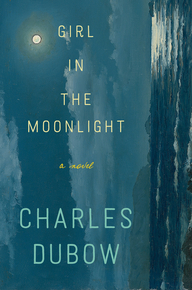 Charles Dubow sets hearts athrobbing — yet again! “The novel is a whirlwind of impossibly chic settings and experiences; the characters know all the right people and do all the right things …. Dubow offers a heady, intoxicating tale…. A story of the most interesting people you will ever know, told with style and verve.” — KIRKUS REVIEWS “This is a page-turner for avid readers of romantic novels.” — LIBRARY JOURNAL
Charles Dubow sets hearts athrobbing — yet again! “The novel is a whirlwind of impossibly chic settings and experiences; the characters know all the right people and do all the right things …. Dubow offers a heady, intoxicating tale…. A story of the most interesting people you will ever know, told with style and verve.” — KIRKUS REVIEWS “This is a page-turner for avid readers of romantic novels.” — LIBRARY JOURNAL
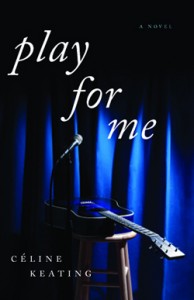 Celine Keating graces us anew. “Evocative, philosophical, and downright entertaining, Play for Me had me turning pages as if to discover the fate not only of its winning heroine, but of myself.” — ALETHEA BLACK, author “Though the story revolves around issues of morality and fidelity—what do we owe ourselves versus what do we owe our loved ones—I cared about each character and hoped he or she would find happiness. This is a page-turner in the best sense. ALICE ELLIOTT DARK, author “Music pours out of this wonderful novel.” — SUSAN SEGAL, author
Celine Keating graces us anew. “Evocative, philosophical, and downright entertaining, Play for Me had me turning pages as if to discover the fate not only of its winning heroine, but of myself.” — ALETHEA BLACK, author “Though the story revolves around issues of morality and fidelity—what do we owe ourselves versus what do we owe our loved ones—I cared about each character and hoped he or she would find happiness. This is a page-turner in the best sense. ALICE ELLIOTT DARK, author “Music pours out of this wonderful novel.” — SUSAN SEGAL, author
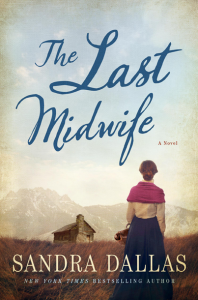 Sandra Dallas delivers again. “This is a novel that celebrates women: their unbreakable bonds, their unselfish love for their children, their incredible capacity to endure. ” — KIRKUS REVIEWS “The Last Midwife evokes a powerful sense of time and place.” —THE DENVER POST “With plot, personality and prose melded into a superb whole, The Last Midwife represents a standout effort in popular fiction, one untethered from dismissive adjectives such as ‘historical’ or ‘crime’ and one that resonates in the present day. As she does in all of her fiction, Dallas casts an unwavering but sympathetic eye on the people of her latest novel. And like Gracy, she gives — and enhances — life.” — RICHMOND TIMES-DISPATCH
Sandra Dallas delivers again. “This is a novel that celebrates women: their unbreakable bonds, their unselfish love for their children, their incredible capacity to endure. ” — KIRKUS REVIEWS “The Last Midwife evokes a powerful sense of time and place.” —THE DENVER POST “With plot, personality and prose melded into a superb whole, The Last Midwife represents a standout effort in popular fiction, one untethered from dismissive adjectives such as ‘historical’ or ‘crime’ and one that resonates in the present day. As she does in all of her fiction, Dallas casts an unwavering but sympathetic eye on the people of her latest novel. And like Gracy, she gives — and enhances — life.” — RICHMOND TIMES-DISPATCH
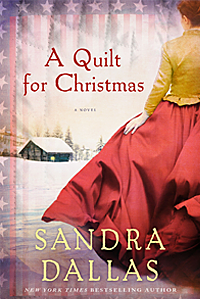 Sandra Dallas stitches together a riveting tale. “A wonderful story full of history and heart that will satisfy Dallas’s many fans.” — LIBRARY JOURNAL “Dallas takes an interesting look at the lives of women left behind during the Civil War, especially in ambivalent Kansas, and grounds her characters in authentic struggles of love and hate, right and wrong, trespasses and forgiveness. Elegant, thought-provoking and quietly powerful.” — KIRKUS REVIEWS
Sandra Dallas stitches together a riveting tale. “A wonderful story full of history and heart that will satisfy Dallas’s many fans.” — LIBRARY JOURNAL “Dallas takes an interesting look at the lives of women left behind during the Civil War, especially in ambivalent Kansas, and grounds her characters in authentic struggles of love and hate, right and wrong, trespasses and forgiveness. Elegant, thought-provoking and quietly powerful.” — KIRKUS REVIEWS
 Edward C. Baig makes tech simple. Personal Tech columnist for USA TODAY, he coauthored iPad mini For Dummies, iPhone For Dummies, and iPad For Dummies. “Since computers do not come with Owner’s Manuals any more, this is just what I needed to teach me what my computer can do and how to do it.”– GAIL A. LEWIS, Amazon customer review
Edward C. Baig makes tech simple. Personal Tech columnist for USA TODAY, he coauthored iPad mini For Dummies, iPhone For Dummies, and iPad For Dummies. “Since computers do not come with Owner’s Manuals any more, this is just what I needed to teach me what my computer can do and how to do it.”– GAIL A. LEWIS, Amazon customer review
 Elizabeth Woyke dials up some savvy insights. “A smartphone full monty that will appeal mostly to the device’s users—all 1.75 billion of them.” — KIRKUS REVIEWS “A superior reporter, Woyke brilliantly presents a clear-eyed view of this new communication device that has conquered everything in sight.” — ROBERT W. MCCHESNEY, author “Readers who fully absorb the more disturbing details of Woyke’s report will never be able to download a new app or listen to a podcast without a twinge or two of consumer guilt.”– BOOKLIST
Elizabeth Woyke dials up some savvy insights. “A smartphone full monty that will appeal mostly to the device’s users—all 1.75 billion of them.” — KIRKUS REVIEWS “A superior reporter, Woyke brilliantly presents a clear-eyed view of this new communication device that has conquered everything in sight.” — ROBERT W. MCCHESNEY, author “Readers who fully absorb the more disturbing details of Woyke’s report will never be able to download a new app or listen to a podcast without a twinge or two of consumer guilt.”– BOOKLIST
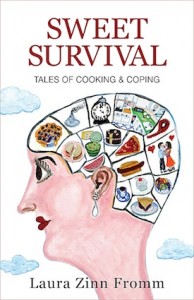 Laura Zinn Fromm serves up a tasty meal. “It’s like sitting in your kitchen with your best friend, talking about life, the loves, births, deaths, longings, failures and joys– and the recipes that go with them. Beautiful, delicious fare.” — JULIE TILSNER, author “Love and divorce, marriage and motherhood, friendship and family; Laura invites you to sit at her kitchen counter as she shares with you the recipes and stories that have seasoned her life.” — JEWISH SCENE
Laura Zinn Fromm serves up a tasty meal. “It’s like sitting in your kitchen with your best friend, talking about life, the loves, births, deaths, longings, failures and joys– and the recipes that go with them. Beautiful, delicious fare.” — JULIE TILSNER, author “Love and divorce, marriage and motherhood, friendship and family; Laura invites you to sit at her kitchen counter as she shares with you the recipes and stories that have seasoned her life.” — JEWISH SCENE
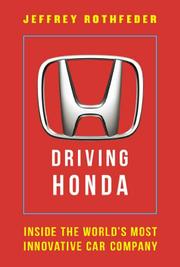 Jeff Rothfeder never steers us astray. “The story of one of the most innovative companies in the world: the automobile manufacturer that makes some of the best-selling and longest-lasting cars on the road.” — KIRKUS REVIEWS “Rothfeder writes well and he mostly manages to steer round the pitfalls of getting too technical.” — ANDREW HILL, Financial Times “Rothfeder’s fluent, concise narrative makes easy reading and also reminds family businesspeople of the sense of partnering with an outsider who can temper the founders’ foibles, and strengthen the company, as Takeo Fujisawa did with Soichiro Honda.” — WILLIAM WADSWORTH, South China Morning Post
Jeff Rothfeder never steers us astray. “The story of one of the most innovative companies in the world: the automobile manufacturer that makes some of the best-selling and longest-lasting cars on the road.” — KIRKUS REVIEWS “Rothfeder writes well and he mostly manages to steer round the pitfalls of getting too technical.” — ANDREW HILL, Financial Times “Rothfeder’s fluent, concise narrative makes easy reading and also reminds family businesspeople of the sense of partnering with an outsider who can temper the founders’ foibles, and strengthen the company, as Takeo Fujisawa did with Soichiro Honda.” — WILLIAM WADSWORTH, South China Morning Post
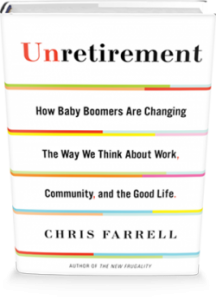 Chris Farrell speaks to Boomers, with authority. “Farrell’s discussions with experts from academia, finance and research foundations offer support for the view that there will be employment available to those who want it.” — KIRKUS REVIEWS “For older workers at a loss for ideas and eager to postpone the inevitable, Farrell’s how-to-cope book will provide a comforting road map and set of possibilities.” –- PUBLISHERS WEEKLY “Finally, an author doesn’t think the Baby Boomer generation is going to bankrupt the nation…Farrell makes a great case for a longer working career for many people…What a breath of fresh air here.” — BOOKLOONS.COM.
Chris Farrell speaks to Boomers, with authority. “Farrell’s discussions with experts from academia, finance and research foundations offer support for the view that there will be employment available to those who want it.” — KIRKUS REVIEWS “For older workers at a loss for ideas and eager to postpone the inevitable, Farrell’s how-to-cope book will provide a comforting road map and set of possibilities.” –- PUBLISHERS WEEKLY “Finally, an author doesn’t think the Baby Boomer generation is going to bankrupt the nation…Farrell makes a great case for a longer working career for many people…What a breath of fresh air here.” — BOOKLOONS.COM.
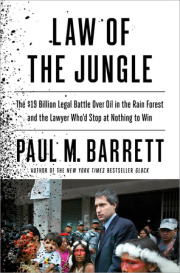 Paul Barrett dazzles again. “An enthralling true-life courtroom drama…Almost Shakespearean in scope, featuring a flawed protagonist with good intentions but tragically overreaching ambitions.” — BOOKLIST “Here’s a twist: the almost unbelievable tale of a human rights attorney every bit as conscienceless as the multinational he was suing… a true-life, courtroom version of Heart of Darkness. — KIRKUS REVIEWS “This chilling account of the bruising, bare-knuckled conflict between a deeply flawed do-gooder and a well-oiled legal steamrolling machine should give pause to anyone who believes that justice always prevails. Barrett brilliantly shows that in the real world, the law of the jungle—an oxymoron if there ever was one—trumps the rule of law.” — ALAN DERSHOWITZ, Harvard Law School
Paul Barrett dazzles again. “An enthralling true-life courtroom drama…Almost Shakespearean in scope, featuring a flawed protagonist with good intentions but tragically overreaching ambitions.” — BOOKLIST “Here’s a twist: the almost unbelievable tale of a human rights attorney every bit as conscienceless as the multinational he was suing… a true-life, courtroom version of Heart of Darkness. — KIRKUS REVIEWS “This chilling account of the bruising, bare-knuckled conflict between a deeply flawed do-gooder and a well-oiled legal steamrolling machine should give pause to anyone who believes that justice always prevails. Barrett brilliantly shows that in the real world, the law of the jungle—an oxymoron if there ever was one—trumps the rule of law.” — ALAN DERSHOWITZ, Harvard Law School
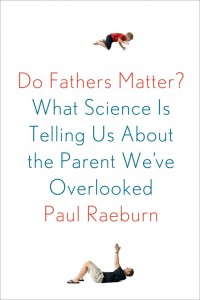 Paul Raeburn shows his scientific savvy once again. “‘Do Fathers Matter?’ gathers an impressive diversity of studies into a single, highly readable volume, covering such topics as conception, pregnancy, infants, teenagers and aging fathers.” — BRUCE FEILER, Washington Post “It’s stuffed with studies showing the vital role fathers play in their children’s lives from the moment of conception, through the mother’s pregnancy and onward. But there’s still a sense of wonder that comes with it.” — JEFFREY KLUGER, TIME “A zippy tour through the latest research on fathers’ distinctive, or predominant, contributions to their children’s lives, “Do Fathers Matter?” is filled with provocative studies of human dads — not to mention a lot of curious animal experiments . . . [Paul Raeburn] writes clearly, untangling cause from effect, noting probabilities and inserting caveats. . . he is an ideal guide to tricky, uncertain research in a nascent field. . . . father research cuts across disciplines, and Mr. Raeburn excels at mapping the twistiness of the road ahead.” — MARK OPPENHEIMER, The New York Times
Paul Raeburn shows his scientific savvy once again. “‘Do Fathers Matter?’ gathers an impressive diversity of studies into a single, highly readable volume, covering such topics as conception, pregnancy, infants, teenagers and aging fathers.” — BRUCE FEILER, Washington Post “It’s stuffed with studies showing the vital role fathers play in their children’s lives from the moment of conception, through the mother’s pregnancy and onward. But there’s still a sense of wonder that comes with it.” — JEFFREY KLUGER, TIME “A zippy tour through the latest research on fathers’ distinctive, or predominant, contributions to their children’s lives, “Do Fathers Matter?” is filled with provocative studies of human dads — not to mention a lot of curious animal experiments . . . [Paul Raeburn] writes clearly, untangling cause from effect, noting probabilities and inserting caveats. . . he is an ideal guide to tricky, uncertain research in a nascent field. . . . father research cuts across disciplines, and Mr. Raeburn excels at mapping the twistiness of the road ahead.” — MARK OPPENHEIMER, The New York Times
 Jack Ewing offers useful lessons. “Jack Ewing dissects German business rules, habits, and procedures with the precise curiosity of an engineer who takes apart and analyses the newest product of a competitor. His approach is hands-on rather than theoretic – and due to dozens of interviews with CEOs, managers, and company owners, as well as employee representatives, he attains an illuminating insight into the inner machinery of the German economy and its success.” – WOLFGANG REUTER, Handelsblatt “Anyone looking to understand what makes Germany tick should read this book. Extraordinarily deft, profoundly human, and yet a deep analysis of how and why Europe’s biggest economy works.” – ALISON SMALE, The New York Times “Jack Ewing’s insightful analysis of Germany’s story shows how Germans built an equation based on historical strengths, adaptation to change, and commitment to competitive excellence. Typical German? Maybe – or maybe not, for those willing to take a look and a lesson from German formulas for success.” – JACKSON JANES, American Institute for Contemporary German Studies, John Hopkins University
Jack Ewing offers useful lessons. “Jack Ewing dissects German business rules, habits, and procedures with the precise curiosity of an engineer who takes apart and analyses the newest product of a competitor. His approach is hands-on rather than theoretic – and due to dozens of interviews with CEOs, managers, and company owners, as well as employee representatives, he attains an illuminating insight into the inner machinery of the German economy and its success.” – WOLFGANG REUTER, Handelsblatt “Anyone looking to understand what makes Germany tick should read this book. Extraordinarily deft, profoundly human, and yet a deep analysis of how and why Europe’s biggest economy works.” – ALISON SMALE, The New York Times “Jack Ewing’s insightful analysis of Germany’s story shows how Germans built an equation based on historical strengths, adaptation to change, and commitment to competitive excellence. Typical German? Maybe – or maybe not, for those willing to take a look and a lesson from German formulas for success.” – JACKSON JANES, American Institute for Contemporary German Studies, John Hopkins University
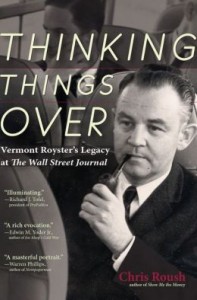 Chris Roush makes a fresh mark. “Vermont Royster was one of newspaperdom’s truly original voices, and for many crucial years the conscience of the Wall Street Journal. Chris Roush brings him to life, while illuminating his times. This is a significant contribution to the history of journalism in the 20th century.” — RICHARD J. TOFEL, president, ProPublica “Chris Roush’s biography of Vermont Royster is a masterful portrait of one of the most influential editors of the 20th century, a writer who left a mark on American journalism that endures to this day.” — WARREN PHILLIPS, CEO, Dow Jones & Co. “Chris Roush’s rich evocation of the memory of Vermont Royster will, I hope, kindle a revival of interest in him and his work.” EDWIN M. YODER, JR., author
Chris Roush makes a fresh mark. “Vermont Royster was one of newspaperdom’s truly original voices, and for many crucial years the conscience of the Wall Street Journal. Chris Roush brings him to life, while illuminating his times. This is a significant contribution to the history of journalism in the 20th century.” — RICHARD J. TOFEL, president, ProPublica “Chris Roush’s biography of Vermont Royster is a masterful portrait of one of the most influential editors of the 20th century, a writer who left a mark on American journalism that endures to this day.” — WARREN PHILLIPS, CEO, Dow Jones & Co. “Chris Roush’s rich evocation of the memory of Vermont Royster will, I hope, kindle a revival of interest in him and his work.” EDWIN M. YODER, JR., author
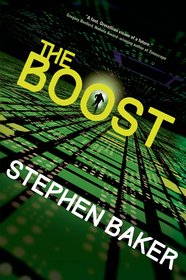 Stephen Baker charges into fiction. “Baker has written a true delight of a techno-thriller that has deep, dark roots in the present.” — KIRKUS REVIEWS “Highly recommended to sf and techno-thriller fans.” — BOOKLIST REVIEWS “An update to the boost, a revolutionary human-computer interface, threatens to open Americans’ brains like a Facebook account left unattended in Baker’s chillingly possible debut, a futuristic thriller with a few flaws.” — PUBLISHERS WEEKLY
Stephen Baker charges into fiction. “Baker has written a true delight of a techno-thriller that has deep, dark roots in the present.” — KIRKUS REVIEWS “Highly recommended to sf and techno-thriller fans.” — BOOKLIST REVIEWS “An update to the boost, a revolutionary human-computer interface, threatens to open Americans’ brains like a Facebook account left unattended in Baker’s chillingly possible debut, a futuristic thriller with a few flaws.” — PUBLISHERS WEEKLY
 Pardon my flagrant self-promotion, but I am excited to post this one. “Weber brings a journalist’s eye for character and story to this engrossing account of Transcendental Meditation and the town—and lives—it transformed. Along the way he probes religious and cultural questions about tradition and change, healing, community, place, and much more. This book is a lively and eye-opening delight.” — MATTHEW S. HEDSTROM, University of Virginia “Like many other alternative religions that burst onto the American scene in the 1960s and 1970s, Transcendental Meditation attracted thousands of followers but also a fair number of detractors. The interplay of meditators and local residents in the midwestern town of Fairfield, Iowa, where TM established its major American center, makes a fascinating case study of the impact of new religions on traditional American culture.” — TIMOTHY MILLER, editor, Spiritual and Visionary Communities: Out to Save the World
Pardon my flagrant self-promotion, but I am excited to post this one. “Weber brings a journalist’s eye for character and story to this engrossing account of Transcendental Meditation and the town—and lives—it transformed. Along the way he probes religious and cultural questions about tradition and change, healing, community, place, and much more. This book is a lively and eye-opening delight.” — MATTHEW S. HEDSTROM, University of Virginia “Like many other alternative religions that burst onto the American scene in the 1960s and 1970s, Transcendental Meditation attracted thousands of followers but also a fair number of detractors. The interplay of meditators and local residents in the midwestern town of Fairfield, Iowa, where TM established its major American center, makes a fascinating case study of the impact of new religions on traditional American culture.” — TIMOTHY MILLER, editor, Spiritual and Visionary Communities: Out to Save the World
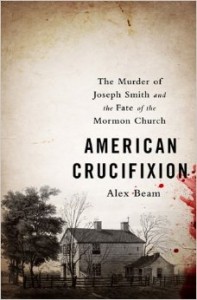 Alex Beam continues to impress, with remarkable variety in his topic choices. “High drama as one of America’s greatest—and most mystifying—characters, Joseph Smith, meets one our most incisive writers, Alex Beam, at a crossroads of our history.”— author RON ROSENBAUM “If Mormonism is the most American of religions—and it is—then the story of its founding is an American epic. In this gripping book, Alex Beam tells the story of the fate of Joseph Smith amid the Mormons’ rising tensions with ‘gentile’ neighbors—and among themselves. With an acute eye for character, he depicts Smith, Brigham Young, and their enemies as vivid, complicated human beings, immersed in struggles over money, power, survival, and the controversial doctrine of polygamy.” — author T.J. STILES “American Crucifixion is an engrossing, powerful account of the rise and fall of one of the most remarkable figures in American history. Alex Beam’s portrait of Joseph Smith—equal parts P. T. Barnum, Huey Long, and the prophet Jeremiah—captures the man in all of his contradictions and complexities.”— author GARY KRIST
Alex Beam continues to impress, with remarkable variety in his topic choices. “High drama as one of America’s greatest—and most mystifying—characters, Joseph Smith, meets one our most incisive writers, Alex Beam, at a crossroads of our history.”— author RON ROSENBAUM “If Mormonism is the most American of religions—and it is—then the story of its founding is an American epic. In this gripping book, Alex Beam tells the story of the fate of Joseph Smith amid the Mormons’ rising tensions with ‘gentile’ neighbors—and among themselves. With an acute eye for character, he depicts Smith, Brigham Young, and their enemies as vivid, complicated human beings, immersed in struggles over money, power, survival, and the controversial doctrine of polygamy.” — author T.J. STILES “American Crucifixion is an engrossing, powerful account of the rise and fall of one of the most remarkable figures in American history. Alex Beam’s portrait of Joseph Smith—equal parts P. T. Barnum, Huey Long, and the prophet Jeremiah—captures the man in all of his contradictions and complexities.”— author GARY KRIST
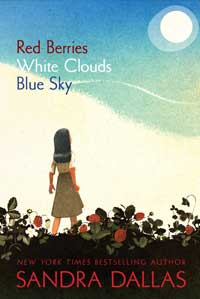 Sandra Dallas takes on another tough topic. “Dallas makes an important time in American history accessible to middle grade readers with this novel that illuminates a time of discrimination while promoting a message of perseverance and tolerance.” — TIFFANY DAVIS, Mount Saint Mary College, Newburgh, NY
Sandra Dallas takes on another tough topic. “Dallas makes an important time in American history accessible to middle grade readers with this novel that illuminates a time of discrimination while promoting a message of perseverance and tolerance.” — TIFFANY DAVIS, Mount Saint Mary College, Newburgh, NY
 Sandra Dallas muses on old-time Denver. “Bestseller Dallas (True Sisters) memorably evokes the raw, rough-edged Denver of 1885 in this blend of suspenseful mystery and nuanced romance…. The author’s depiction of 19th-century Denver, especially its seedier side, is vividly authentic, while the nascent bond between Mick and Beret will have readers eagerly anticipating their next encounter. — PUBLISHERS WEEKLY “Dallas plumbs the lives of so-called fallen women in 1885 Denver as she ably reveals the ties, sturdy as well as tenuous, that bind two sisters and test the memory of their relationship after one of them is found murdered in a brothel….Sure to be snapped up by era fans as well as Dallas’ loyal readership. — JULIE TREVELYAN, Booklist
Sandra Dallas muses on old-time Denver. “Bestseller Dallas (True Sisters) memorably evokes the raw, rough-edged Denver of 1885 in this blend of suspenseful mystery and nuanced romance…. The author’s depiction of 19th-century Denver, especially its seedier side, is vividly authentic, while the nascent bond between Mick and Beret will have readers eagerly anticipating their next encounter. — PUBLISHERS WEEKLY “Dallas plumbs the lives of so-called fallen women in 1885 Denver as she ably reveals the ties, sturdy as well as tenuous, that bind two sisters and test the memory of their relationship after one of them is found murdered in a brothel….Sure to be snapped up by era fans as well as Dallas’ loyal readership. — JULIE TREVELYAN, Booklist
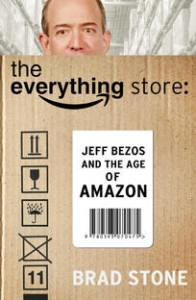 Brad Stone offers the inside skinny on Bezos, with little help from the subject, in The Everything Store: Jeff Bezos and the Age of Amazon. “… the meticulously reported book has plenty of gems for anyone who cares about Amazon, Jeff Bezos, entrepreneurship, leadership or just the lunacy it took to build a company in less than two decades that now employs almost 90,000 people and sold $61 billion worth of, well, almost everything last year.” — BETHANY McLEAN, WASHINGTON POST “For people seeking to understand what can be an enigmatic company, the book does a great service in explaining the psychology of Amazon, and the company’s role as an extension of Bezos’ brain.” — GEEKWIRE “Everywhere I can fact check from personal knowledge, I find way too many inaccuracies, and unfortunately that casts doubt over every episode in the book,” MACKENZIE BEZOS (Jeff’s wife), AMAZON.COM
Brad Stone offers the inside skinny on Bezos, with little help from the subject, in The Everything Store: Jeff Bezos and the Age of Amazon. “… the meticulously reported book has plenty of gems for anyone who cares about Amazon, Jeff Bezos, entrepreneurship, leadership or just the lunacy it took to build a company in less than two decades that now employs almost 90,000 people and sold $61 billion worth of, well, almost everything last year.” — BETHANY McLEAN, WASHINGTON POST “For people seeking to understand what can be an enigmatic company, the book does a great service in explaining the psychology of Amazon, and the company’s role as an extension of Bezos’ brain.” — GEEKWIRE “Everywhere I can fact check from personal knowledge, I find way too many inaccuracies, and unfortunately that casts doubt over every episode in the book,” MACKENZIE BEZOS (Jeff’s wife), AMAZON.COM
 In the spirit of Reader’s Digest magazine’s popular 13 Things They Won’t Tell You series, Jennifer Merritt and coauthor Roe D’Angelo developed what their publisher calls “the ultimate roadmap for making the most of your money and avoiding the wallet-sucking scams.” They “talked to everyday and not-so-everyday rich folks, and to the experts who helped make them rich, to learn their secrets on what to save for, how much to save—and where to stash cash so that it grows (hint: not that bank savings account).”
In the spirit of Reader’s Digest magazine’s popular 13 Things They Won’t Tell You series, Jennifer Merritt and coauthor Roe D’Angelo developed what their publisher calls “the ultimate roadmap for making the most of your money and avoiding the wallet-sucking scams.” They “talked to everyday and not-so-everyday rich folks, and to the experts who helped make them rich, to learn their secrets on what to save for, how much to save—and where to stash cash so that it grows (hint: not that bank savings account).”
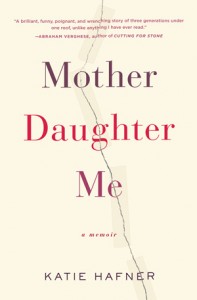 Katie Hafner gets personal. “Her memoir shines a light on nurturing deficits repeated through generations and will lead many readers to relive their own struggles with forgiveness.” —ERICA JONG, PEOPLE “Katie Hafner’s Mother Daughter Me delivers an unusually graceful story, one that balances honesty and tact. . . . Hafner narrates the events so adeptly that they feel enlightening.” — HARPER’S “Heartbreakingly honest, yet not without hope and flashes of wry humor.” — KIRKUS REVIEWS “[An] emotionally raw memoir examining the delicate, inevitable shift from dependence to independence and back again.” — O: THE OPRAH MAGAZINE (Ten Titles to Pick Up Now) “Weaving past with present, anecdote with analysis, Hafner’s riveting account of multigenerational living and mother-daughter frictions, of love and forgiveness, is devoid of self-pity and unafraid of self-blame.” — ELLE
Katie Hafner gets personal. “Her memoir shines a light on nurturing deficits repeated through generations and will lead many readers to relive their own struggles with forgiveness.” —ERICA JONG, PEOPLE “Katie Hafner’s Mother Daughter Me delivers an unusually graceful story, one that balances honesty and tact. . . . Hafner narrates the events so adeptly that they feel enlightening.” — HARPER’S “Heartbreakingly honest, yet not without hope and flashes of wry humor.” — KIRKUS REVIEWS “[An] emotionally raw memoir examining the delicate, inevitable shift from dependence to independence and back again.” — O: THE OPRAH MAGAZINE (Ten Titles to Pick Up Now) “Weaving past with present, anecdote with analysis, Hafner’s riveting account of multigenerational living and mother-daughter frictions, of love and forgiveness, is devoid of self-pity and unafraid of self-blame.” — ELLE
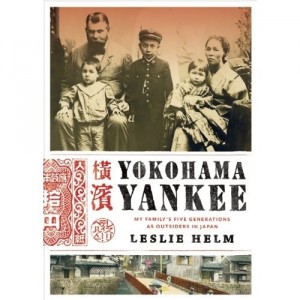
Leslie Helm is making an impressive mark with this memoir. “Yokohama Yankee is a marvelous and eloquent work of family history. What makes it more remarkable is this family’s history also sheds light on the political, economic, cultural, and racial interactions and tensions between Japan and the United States for more than a century and a half, right up to the present day. This is a humane and insightful book that will be read many years from now.” — JAMES FALLOWS of The Atlantic. “Like a sword cleaving a bittersweet fruit, Leslie Helm’s saga of his mixed-blood family in Japan cuts to the inescapable isolation of being white in a country where blood still means so much. Yokohama Yankee is a painfully intimate story that spans more than a century and brings the wrenching history of modern Japan into a focus that is both razor sharp and deeply human.” — BLAINE HARDEN, former Tokyo bureau chief of The Washington Post
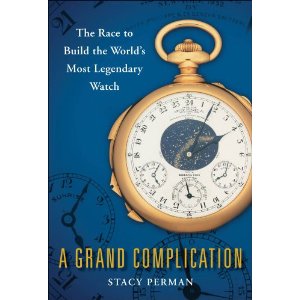 Stacy Perman clocks in anew with a timely effort. “A unique competition between two scions of the Gilded Age is the driver for this fresh look at the mores of the rich and powerful. The aim of the competition was to acquire the world’s most complicated timepieces. She effectively combines these different strands, providing a compelling social history…A masterful approach to composition combines with a fascinating plot and makes its subject entertaining as well as compelling.” — KIRKUS REVIEWS (Starred Review ) “Lively” — PUBLISHERS WEEKLY
Stacy Perman clocks in anew with a timely effort. “A unique competition between two scions of the Gilded Age is the driver for this fresh look at the mores of the rich and powerful. The aim of the competition was to acquire the world’s most complicated timepieces. She effectively combines these different strands, providing a compelling social history…A masterful approach to composition combines with a fascinating plot and makes its subject entertaining as well as compelling.” — KIRKUS REVIEWS (Starred Review ) “Lively” — PUBLISHERS WEEKLY
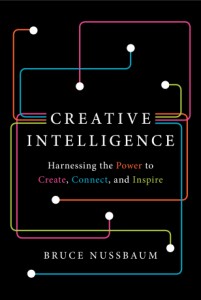
Bruce Nussbaum wields his keen mind. “Bruce Nussbaum demystifies one of the most important initiatives of our time — unlocking the creativity within ourselves and our organizations.” — DAVID KELLEY, founder of IDEO and the Stanford d.school “An intriguing mixture of challenging ideas and Utopian solutions to the broader issues regarding social welfare currently under debate.” — KIRKUS REVIEWS “Creative Intelligence lays out the forces that will drive us toward a prosperous future. Read this book if you want to be inspired and provoked to lead the way.” — RICHARD FLORIDA, Univ. of Toronto; Senior Editor, The Atlantic
Charles Dubow roars out of the gate with his first effort. “An epic novel of friendship, betrayal and undying love … outstanding” — KIRKUS REVIEWS (Starred Review) “A smart, sensuous, and moving debut. … Delicious. … The characters exude a Jazz Age glamour.” — O MAGAZINE
 Robert Buderi enlightens us about military matters. “This book is a must for anyone that wants to know how the best research is done, especially the first chapter on the USS Cole disaster, and the beginning of the Iraqi war. Scientists and Admirals are finding solutions to achieve victory to an unconventional war with innovative ideas. It is fascinating how ideas are translated into science and innovation.” Marilene, AMAZON review
Robert Buderi enlightens us about military matters. “This book is a must for anyone that wants to know how the best research is done, especially the first chapter on the USS Cole disaster, and the beginning of the Iraqi war. Scientists and Admirals are finding solutions to achieve victory to an unconventional war with innovative ideas. It is fascinating how ideas are translated into science and innovation.” Marilene, AMAZON review
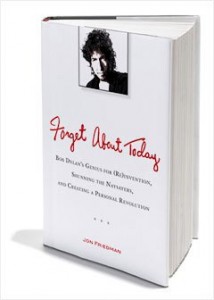 Jon Friedman takes a novel look at Dylan. “… a unique view of Dylan through his actions, his decisions. Friedman took a tried and true formula of “Self Help” advice, turned it on its head by navigating through Dylan’s career to make the case that, despite – or perhaps because – of the chances he has taken, the unorthodox method Dylan has used could, indeed, be inspirational to people in all walks of life, in the workplace and one’s private life.” — HAROLD LEPIDUS, Performing Arts Examiner. “Friedman has produced a clear, passionate case for Dylan’s importance as a personal role model, rather than an artist or a cultural symbol. The lessons that he draws are no less true for being trite. If you love Bob Dylan, and you enjoy self-help literature, you’ll probably like this book.” — RICHARD MCGILL MURPHY, Fortune
Jon Friedman takes a novel look at Dylan. “… a unique view of Dylan through his actions, his decisions. Friedman took a tried and true formula of “Self Help” advice, turned it on its head by navigating through Dylan’s career to make the case that, despite – or perhaps because – of the chances he has taken, the unorthodox method Dylan has used could, indeed, be inspirational to people in all walks of life, in the workplace and one’s private life.” — HAROLD LEPIDUS, Performing Arts Examiner. “Friedman has produced a clear, passionate case for Dylan’s importance as a personal role model, rather than an artist or a cultural symbol. The lessons that he draws are no less true for being trite. If you love Bob Dylan, and you enjoy self-help literature, you’ll probably like this book.” — RICHARD MCGILL MURPHY, Fortune
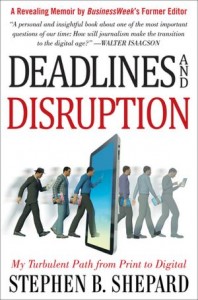
Steve Shepard, guru to us all, lays it all out in this memoir. “This is a personal and insightful book about one of the most important questions of our time: how will journalism make the transition to the digital age? Steve Shepard made that leap bravely when he went from being a great magazine editor to the first dean of the City University of New York journalism school. His tale is filled with great lessons for us all.” — WALTER ISAACSON “An insightful and convivial account of a bright, bountiful life dedicated to words, information and wonder.” — KIRKUS REVIEWS (Starred Review)
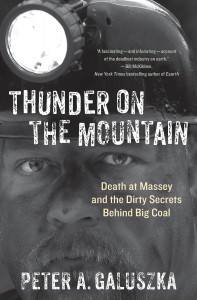
Peter Galuszka digs deep into the world of coal-mining. “A fascinating—and infuriating—account of the deadliest industry on earth. Deadly for its workers and the people unfortunate enough to live near its mines, but deadlier still for the planet. You can’t understand our moment in time without understanding the coal industry.” — BILL McKIBBEN, author. “Appalachia may be blessed with the ‘world’s best metallurgical coal,’ but as journalist Galuszka’s powerful book shows, this coal is both ‘a curse and a prize…’ He convincingly excoriates the safety record of Massey Energy and its controversial former CEO, Don Blankenship… Drawing on his personal experience of Appalachia, Galuszka offers a sympathetic but unsentimental portrait of the region’s people and their struggles.” — PUBLISHERS WEEKLY “Natural gas, renewables, and efficiency are positioned to be the sources of America’s energy expansion, while coal represents the nation’s past. Galuszka’s Thunder on the Mountain highlights the disturbing and often deadly impacts of this highly polluting energy source and why Big Coal might just be losing its power.”– RON PERNICK, managing director of Clean Edge, Inc.

John N. Frank shares insights about life in the job market. He includes a chapter about his time at BW that he says alums might find intriguing.
Julia Lichtblau gives Woody Allen a run for his money. Her story in this collection is “Désolée, Monsieur.” She has work forthcoming in The Florida Review — the story “Foreign Service” — and in Temenos — “May, 1968” — and has been published in Ploughshares blog, Narrative,The Common Online, Pindelbox, and Tertulia.

Fran Hawthorne takes aim at some longtime faves. “Fran Hawthorne’s illuminating book will delight fans of ‘corporate social responsibility’—and enrage its critics. Her descriptions of Apple, for example, at once beloved and much criticized by the CSR crowd, aptly captures the essence of the debate.”—ADAM LASHINSKY, author. “In assessing corporate performance on social responsibility, Fran Hawthorne digs beneath the surface of some of America’s most beloved companies…. Bravo to Ethical Chic for helping to illuminate which companies are on the right track.”—DANIEL C. ESTY, author. “Hawthorne goes beyond the usual categories of ‘social responsibility’ to offer a remarkably clear-eyed view of what we should really expect from companies—and what we shouldn’t.” —MICHAEL BLANDING, author.

Jennifer Merritt helps the career-minded. “Are you looking for a mere job–the kind where you do virtually the same thing day after day, year after year, and spend the hours counting down the minutes until the clock hits five p.m.? Or are you looking for a “career”–the kind that engages your interests and passions, constantly presents new and exciting opportunities and challenges, and allows you to grow personally and professionally? If you chose the latter, this is the book for you.” — CROWN BUSINESS

Gary Weiss goes for jugular of the Tea Party movement. “Ayn Rand Nation is a fascinating exploration of one of the fastest-growing and most powerful coalitions in American politics….If you want to understand the men and women whose vehement voices are reshaping American government, you must read this book.”—KURT EICHENWALD “The timing of this book couldn’t be better for Americans who are trying to understand where in the hell the far-out right’s anti-worker, anti-egalitarian extremism is coming from. Ayn Rand Nation introduces us to the godmother of such Tea Party craziness as destroying Social Security and eliminating Wall Street regulation.”—JIM HIGHTOWER, author. “Think Ayn Rand is marginal? Think again! Gary Weiss’s powerful new history inscribes the libertarian firebrand at the very center of the American story of the past three decades.”—DAVID FRUM, author

Diane Brady tells an inspiring tale. “Holy Cross, Black Power, and the Sixties could have been an unholy mix. A bold Jesuit priest made it a holy one. The story of Father John Brooks, Clarence Thomas, Ted Wells, and the others rings with power, pride, and human feeling. Fraternity and the saga it retells adds honor to my college.”—CHRIS MATTHEWS, anchor, MSNBC’s Hardball with Chris Matthews “Diane Brady’s book brilliantly shows how the attention and concern of one man changed not only the course of these individual lives but the course of history.”—WES MOORE, author

Julia Flynn Siler immerses us in some of the ugly history of Paradise. “A sweeping tale of tragedy, greed, betrayal, and imperialism… The depth of her research shines through the narrative, and the lush prose and quick pace make for engaging reading… absorbing.”– LIBRARY JOURNAL “Richly…sourced… [Siler is] able to color in many figures who had heretofore existed largely in outline or black and white… a solidly researched account of an important chapter in our national history, one that most Americans don’t know but should… an 1893 New York Times headline called [the annexation] ‘the political crime of the century.’”– NEW YORK TIMES BOOK REVIEW

Arms and the man, redux. “Paul Barrett’s Glock is a fascinating and bizarre tale of an entrepreneur, a weapon, and a nation’s love affair with guns.” — JEFFREY TOOBIN, staff writer, The New Yorker. “This book—from a top-notch reporter—will enlighten you about both gun culture and business culture. It’s fascinating, even-handed, and packs considerable punch!” —BILL McKIBBEN, author. Paul has talked about the subject, too.
Sandra Dallas brings it home again. In a novel based on true events, New York Times bestselling author Sandra Dallas delivers the story of four women—seeking the promise of salvation and prosperity in a new land—who come together on a harrowing journey.
Sandra Dallas tries her fine hand at Young Adult fiction. “Period details, engaging characters and clever plot twists will entice even the most discerning fans of historical fiction. Populated with brave and intelligent women, Dallas story is as much about Emmy s journey toward womanhood as their journey toward the West. Solid writing and a close attention to details make this story more than the sum of its parts.” — KIRKUS
Giles Blunt lands it again. “[Giles Blunt’s novels] stand as landmarks in what we might think of as the new Canadian crime wave. . . . John Cardinal is the quintessential modern Canadian crime fiction hero–the northern lawman reimagined.” — THE WALRUS “Blunt writes with the flashing grace of an ice skater skimming over a frozen pond.” — NEW YORK TIMES BOOK REVIEW
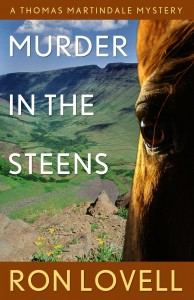 Ron Lovell adds to his Thomas Martindale mystery series. “I was surprised but so far this is my favorite book out of the Martindale series. This book really showcased his masterful mystery techniques. His writing style reminds me a lot of Tom Clancy. Good Series, Fast paced and an easy read. Worth checking out.” — JLFG (Amazon customer review)
Ron Lovell adds to his Thomas Martindale mystery series. “I was surprised but so far this is my favorite book out of the Martindale series. This book really showcased his masterful mystery techniques. His writing style reminds me a lot of Tom Clancy. Good Series, Fast paced and an easy read. Worth checking out.” — JLFG (Amazon customer review)
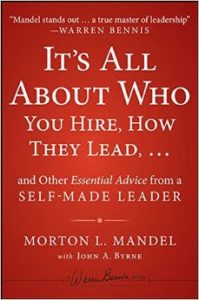 John Byrne lent a hand on this one. “… Mort has spent most of his very productive life outside the spotlight. But he has finally sat down long enough to write a brilliant book filled with the advice that helped make him a leading philanthropist, business leader, social entrepreneur and self-made billionaire. … His highly compelling book is not a memoir but rather an exploration of the fundamental principles that shaped his career and beliefs.” — MARSHALL GOLDSMITH, Amazon Reviews
John Byrne lent a hand on this one. “… Mort has spent most of his very productive life outside the spotlight. But he has finally sat down long enough to write a brilliant book filled with the advice that helped make him a leading philanthropist, business leader, social entrepreneur and self-made billionaire. … His highly compelling book is not a memoir but rather an exploration of the fundamental principles that shaped his career and beliefs.” — MARSHALL GOLDSMITH, Amazon Reviews
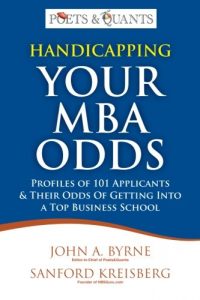 John Byrne teams up with Sanford Kreisberg to offer sage counsel. John is editor-in-chief of PoetsandQuants.com and the author or co-author of ten business books, including two New York Times bestsellers. He is also the former executive editor of BusinessWeek magazine, the former editor-in-chief of BusinessWeek.com, and the former editor-in-chief of Fast Company magazine. Sanford Kreisberg is a leading MBA admissons consultant. His firm, HBSGuru.com, specializes in helping applicants get into Harvard, Stanford, Wharton and other top business schools.
John Byrne teams up with Sanford Kreisberg to offer sage counsel. John is editor-in-chief of PoetsandQuants.com and the author or co-author of ten business books, including two New York Times bestsellers. He is also the former executive editor of BusinessWeek magazine, the former editor-in-chief of BusinessWeek.com, and the former editor-in-chief of Fast Company magazine. Sanford Kreisberg is a leading MBA admissons consultant. His firm, HBSGuru.com, specializes in helping applicants get into Harvard, Stanford, Wharton and other top business schools.
2011
 Ellen Neuborne and Orly Sade took on financial literacy for young folks. “Along the way, Ella learns about key business concepts, such as market research, competitive analysis, word-of-mouth marketing, guerilla marketing, costs, revenue, profits, loss, leadership, partnerships… and the list goes on. She also learns about the many types of financial products, including stocks, bonds and loans.” – ERICA SWALLOW “My husband read this to our 9-year-old son, and they both enjoyed the story. My husband is an entrepreneur, and he felt the financial concepts in this book were sound.” – JYOTSNA SREENIVASAN
Ellen Neuborne and Orly Sade took on financial literacy for young folks. “Along the way, Ella learns about key business concepts, such as market research, competitive analysis, word-of-mouth marketing, guerilla marketing, costs, revenue, profits, loss, leadership, partnerships… and the list goes on. She also learns about the many types of financial products, including stocks, bonds and loans.” – ERICA SWALLOW “My husband read this to our 9-year-old son, and they both enjoyed the story. My husband is an entrepreneur, and he felt the financial concepts in this book were sound.” – JYOTSNA SREENIVASAN

“Chester Dawson is a Japanese-speaking investigative reporter who has got the inside story of Lexus and made it come alive. – EZRA F. VOGEL, Harvard University. “This is a tale of invention, innovation, consumer insight, dedication and resolve.” – MICHAEL SILVERSTEIN, The Boston Consulting Group “This is a must-read not only for car buffs, but for any manager or executive who wants to understand any manager or executive who wants to understand how to create, sustain and expand an elite brand.” – MICHELINE MAYNARD, author

John Byrne shares the wisdom of people who shook things up. “In World Changers, John Byrne has assembled a fascinating cast of characters from Oprah Winfrey to Steve Jobs. Through excerpts from their published interviews and Byrne’s own one-on-one interviews with these entrepreneurs, Byrne pieces together not just a readable volume of personal narratives but a collection of insights into what it takes to change the world. The stories are diverse, but taken as a whole, they are inspirational and educational.”– JOHN COLEMAN “If you loved Jack Welch’s Straight from the Gut, you’ll need to read this new book about how entrepreneurs drive change with passion and vision. Few people have enjoyed a seat at the table with extraordinary entrepreneurs as John has …” — MARK THOMPSON

Larry Light sallied forth against the forces of darkness. “… [P]erfect summer reading fare. The author, a financial reporter and editor, is a skilled storyteller. In this book he explores a range of investment strategies and instruments, traces their development, and in the process profiles some of the best-known investors and academics.” BRENDA JUBIN, Seeking Alpha

Dori Jones Yang waxed historical. “Yang has done an excellent job describing 14th century Mongolia, and by including the familiar character of Marco Polo she has a seamless way to weave all of the amazing facts about this setting into the narrative while rarely dragging down the story. A refreshing change of pace from a lot of the historical fiction/romance out there today! (And a brief aside: a book with a wonderful cover! After the whitewashing controversies of the last few years, 2011 is shaping up to be an amazing year for proudly putting the faces of characters of color on covers!)” BOOKISH BLATHER “The language is believable, and the descriptions of customs, foods, and places during that time period are vivid and engaging…. History is brought alive in this novel, and I enjoyed getting a glimpse of Chinese and Mongolian history mixed with a bit of adventure.” SQUEAKY CLEAN READS

Dori Jones Yang also remained a scribe. “The oral histories in this book provide valuable primary-source material about the so-called ‘lost generation’ of Chinese Americans, those who came as students in the 1940s through 1960s. This book fills a gap in our knowledge and will enrich the studies of academic researchers analyzing the experience of the Chinese diaspora.”EVELYN HU-DEHART, Brown University. “Academics and researchers will find this book of oral history an indispensable resource to study a long overlooked group of Chinese immigrants in America.” PETER KWONG, Hunter College

Celine Keatings’s new novel is piling up the praise: “Céline Keating‘s deftly plotted novel takes readers on a gripping journey along the underground railroad of post-’60s radicalism. . . . Every adult has to reinterpret the story of her childhood. Keating beautifully demonstrates the courage it takes for each of us to face that bittersweet truth.” LARRY DARK, Director of The Story Prize “A beautiful book–at once nostalgic and fresh–that will go straight to your heart and lodge there.” ALETHEA BLACK, author of I Knew You’d Be Lovely “[An] emotional page-turner. Layla’s coming to terms with her parents’ dangerous activism is heart wrenching due to Keating’s delightfully drawn characters. This novel also serves as a compelling lesson in our values and how drastically they’ve changed. It serves as a better history than any essay or screed.” SUSAN BRAUDY, author of Family Circle. Intriguing trailer, too.

So, too, is Amy Cortese‘s new effort in nonfiction. “If Michael Pollan changed the way you think about food, let Amy Cortese change the way you think about finance.” JAY LEE “Locavesting uses great storytelling to present a structured analysis of how and why to invest where you live and in the (mostly) small businesses there. Each aspect of Locavesting is brought to life by sketches of real people who impress, amuse, and intrigue.” CLIFFORD J. REEVES “This is one of the best books I have ever read on the topic of financing small business growth.” RODNEY LOGES

As is the effort by Stanley Reed and Alison Fitzgerald. “…the latest, and probably the best, of what one might call the “private sector” books about the BP spill…by a pair of talented and experienced Bloomberg reporters.” FINANCIAL TIMES “The two journalists make a logical team, and their book is often enlightening about the corporate-political nexus that placed enrichment of the already rich and aggrandizement of the already influential above the common good.” USA TODAY

Stephen Baker‘s takeout on the advance of the computer into the game-show realm proved intriguing. “Like Tracy Kidder’s Soul of a New Machine (1981), Baker’s book finds us at the dawn of a singularity. It’s an excellent case study, and does good double duty as a Philip K. Dick scenario, too.” KIRKUS REVIEWS “Final Jeopardy not only holds the answers to my … questions, but really delves into the man vs. machine thought. How do we as humans learn a language? How do we measure perception? And then once we know all of this, how do we teach it to a machine? If you are even the slightest bit interested in artificial intelligence this book is for you. At the same time, it is not so down in the computery depths that someone who knows little of data-mining algorithms won’t be able to understand. I think it is a very accessible book.” Julia, THE BROKE AND THE BOOKISH

Steve Hamm, with a couple coauthors, weighed in about machines, too. “IBM doesn’t just THINK, it thinks big. The story of these big ideas illustrates how 100 years of innovation have shaped the way we live and work today.” KENNETH CHENAULT, American Express. “Making the World Work Better convincingly documents IBM’s enormous impact on business and the world. Its history provides vital lessons for organizations of all sizes, and IBM’s future promises to continue to innovate the way we work, and even think.” HENRY CHESBROUGH, Haas School of Business, UC Berkeley “Innovation, resilience, and great leadership are the key ingredients of the IBM story. Making the World Work Better tells that story exceptionally well. Ultimately, it reveals that IBM is not simply a technology company; it is a company of ideas and the future those ideas have created.” JOHN HOLLAR, Computer History Museum

William J. Holstein takes a look at what ails us. “[A] timely prescription for what our country must do to regain its financial fortitude and reinvigorate our national economy. While many believe that America faces an inevitable decline and loss of global leadership to emerging Asian economies as we exhaust our ability to innovate and compete, Holstein offers a more optimistic assessment of American industry and its ability to rise to the challenge.” PETER G. BALBUS, Pragmaxis LLC “If wishful thinking were dollars, this book would be a gold mine. As it is, Holstein provides an optimistic but not necessarily candy-colored view of a resurgent American economy.” KIRKUS REVIEWS

Alethea Black is winning lots of fans with her fiction. “This debut reads like a dream, with nary a false note…” KIRKUS REVIEWS. “A sense of vulnerable restlessness is betrayed by the otherwise pragmatic characters of Black’s strong debut collection.” PUBLISHERS WEEKLY “Alethea Black is downright brilliant at capturing the restless striving for a self that we all are feeling in this parlous and unsettling age. I Knew You’d Be Lovely is a splendidly resonant debut by an important young writer.” ROBERT OLEN BUTLER, author of A Good Scent From a Strange Mountain
Chris Roush created a must-have text for budding business journalists and updated it nicely with this new edition. I use it in my classes. There can be no stronger endorsement! This is a keeper.
Sandra Dallas extended her long run. “[A] winning combination of solid historical fiction,vivid enduring characters,and an interesting story that pulls the reader right in. Sandra Dallas is at the top of her game with THE BRIDE’S HOUSE…an excellent read.” BOOKREPORTER.COM
zealously sought out silence … [but it] eluded him: underwater in his bathtub the roaring metropolis was amplified by the denser medium of water; in Paris’s catacombs a distant hum persisted among the stacked skulls and bones; and in his family home on Cape Cod the absence of excessive sound, rather than soothing him, made him conscious of the absence of his recently deceased mother. Yet in a Minneapolis anechoic chamber, he felt rested, relaxed, and triumphant, becoming the first person to stay in the dark and silent chamber alone for 45 minutes. The author’s quixotic quest is quirky, inventive, and alluring …” — PUBLISHERS WEEKLY “Foy’s thinking about quietude began where it never exists: the New York City subway. With an audiometer, he measured the decibels of its deafening cacophony in addition to levels in his apartment, the street, and the former mansion of Joseph Pulitzer, who hated noise…. Foy’s is an adventurous and perceptively ruminative investigation of acoustical annoyances.” — GILBERT TAYLOR, BOOKLIST

Fran Hawthorne explains how real simple is anything but. “With a welcome mixture of facts and humor, Fran Hawthorne highlights the dilemmas of living an environmentally virtuous, healthy life in a fiercely consumption-oriented culture.—MICHAEL F. JACOBSON, Center for Science in the Public Interest “People are quickly learning that living a simple, low-impact life actually isn’t so simple. Thankfully, there’s much-needed relief to be found in Fran Hawthorne’s funny, poignant, and often eye-opening way of sorting through the dilemmas-and solutions—facing socially and environmentally minded consumers.”—GREG MELVILLE, author

Chris Roush, with a colleague, offered a helpful tutorial. “The book is an invaluable guide to helping you get business right, understand it, and explain it. Which is, of course, what we all should be trying to do.” ALLAN SLOAN, Fortune magazine “An essential interpretive guide for business journalists striving to make the arcane clear to readers. Very practical references for today’s changing business climate.” PATRICK SCOTT, Charlotte Observer “A comprehensive reference tool for virtually every phrase a business or economics reporter or editor needs to know. An indispensable guide both for specialists and especially for those who get thrust into covering business or economic stories.” GREG DAVID, Crain’s New York Business

Sandra Dallas kept them coming. “Dallas presents another historical novel about the hardscrabble mining communities of Colorado, set just down the road from her best-selling Prayers for Sale (2009), creating a patchwork of individuals whose lives had not intersected until this singular, transformative event. Readers may find the abrupt transitions and preponderance of flashbacks confusing and distancing. Dallas is well known for her storytelling abilities, but this reads more like a valediction of a time and place faded from memory than her usual vibrant, visceral tale. Still, Dallas is a magnet.” LYNNE WELCH, Booklist

Another standout from Hardy Green. “Taking in textile, coal, oil, lumber and appliance-manufacturing towns, Mr. Green’s survey is a useful one…. [T]he company towns overseen by Milton Hershey, Francis Cabot Lowell and even Charlie Cannon were communities enlivened by quirks and passions and idiosyncratic visions. Edens? Hardly. But they had soul, and you can neither buy nor sell that at the company store.” WALL STREET JOURNAL “Mr. Green sprints – at times breathlessly – through all kinds of company towns, mostly past but some present…. He uses these accounts, in tandem with a clean, engaging voice, to tell story upon story…. Mr. Green has amassed a collection of important, well-told stories about the contradictions, inequities and possibilities of American capitalism.” NEW YORK TIMES “[A] delightful book.” THE ECONOMIST

Andrew Park weighed in on matters of faith. “He discusses his parents’ religious upbringing and the impact it had on him. His father, for instance, was raised in the Church of Scotland, the forebear of Presbyterianism, which left him with unpleasant memories that he passed on to Park; meanwhile, Park’s older brother converted to modern Evangelical Christianity. Whether writing about his family or Rick Warren’s Saddleback megachurch, Park remains a father trying to delicately balance the responsibilities of parenthood and being true to himself. A lovely read.” JUNE SAWYERS, Booklist “Park puts on his journalist’s hat to explore the sociological backdrop of periods in America when religion experienced growth and upheaval. He examines his own inconstant feelings and discovers he has pragmatic reasons to be drawn to faith, including the community it provides. Ultimately his investigations bring Park back where he started, but with new insight. He attends a seminar about how to raise ethical children without religion and seems to have found his own holy grail: It’s OK to be a doubting dad.” MICHELLE BOORSTEIN, Washington Post.

Arlene Weintraub has made some marketers nervous. “Weintraub, a former senior writer for BusinessWeek, portrays the hormone replacement sector as a cesspool of unproven claims, unacknowledged side-effects, and marketing scams. It’s also a zoo of colorful quacks, presided over by actress Suzanne Somers, author of best-selling alternative medicine treatises. Weintraub mixes acute reportage with a censorious tone; she deplores the notion that old age is a disease.” PUBLISHERS WEEKLY “Wrinkles, fat, and low libido start to sound pretty good after reading this unnerving exposé by journalist Arlene Weintraub. Her elixir of deep research and smooth storytelling delivers a sometimes-gag-inducing dose of reality…” FAST COMPANY “Weintraub generates plenty of feverish prose and cautionary tales to highlight this powerfully seductive syllogism of the “anti-aging industry…” AARP Magazine

Chris Farrell caught the sense of the times. “Chris Farrell provides practical guidance about how to manage personal finances. In a nutshell, which is a great disservice to the author, Farrell — who hosts a radio show on NPR– advocates implementing a margin of safety in investing and a return to the frugality that many of us grew up with…the world would be a better place if more people followed his common sense advice.” NEWARK STAR LEDGER “The title of this book hooked me from the start. What am I writing about at The Simple Dollar if I’m not writing about “the new frugality” Chris Farrell, the author of the book, is a name I’m familiar with having been a long-time faithful listener of Marketplace Money (and it’s other Marketplace brethren) on NPR. I expected a well-written book that offered lots of insightful thoughts on the “new frugality” along with some practical tips. That’s precisely what I got. Let’s dig in.” CHRISTIAN SCIENCE MONITOR “[The New Frugality] will help you spend less and save more…This book is filled with anecdotes, historical insights, resources and common sense, all of which are designed to teach you how to wisely spend your money while saving for the future.” THE ARIZONA REPUBLIC

Giles Blunt added to a shelf groaning with work. “As distinctively Canadian as a Tom Thomson painting. . . . Crime Machine is as good as Canadian crime fiction gets.” MARGARET CANNON, The Globe and Mail “A marvelously controlled writer, equally confident with characters and narrative.” TORONTO STAR “First-rate series. . . .You can hear the crunch of snowshoes through the bush, smell the buckshot mingling with fresh blood.” NOW (Toronto) “Another winner from one of Canada’s leading crime writers.” THE PETERBOROUGH EXAMINER

Joan Hamilton came to Meg Whitman’s aid. “Meg Whitman doesn’t just talk about important values such as integrity, accountability, authenticity and courage, she lives them…. In this engaging and honest book, Meg shares these values and how she applied them to pioneering a new model for managing a twenty-first-century company. This book only deepens my admiration for Meg’s leadership.” A.G. LAFLEY, Procter & Gamble. “As an eBay board member, I saw firsthand Meg Whitman’s determination to live and manage by the answer to the question ‘What is the right thing to do?’ as she helped eBay develop its character as a company. This book explores the values she brought to eBay and the values she nurtured at eBay – values that ultimately helped her create a remarkable success story and a powerful consumer brand.” HOWARD SCHULTZ, Starbucks “Meg Whitman makes a compelling connection between achieving success and holding firm to high standards of integrity and personal values. It’s clear and effective advice for motivating people to do their very best.” W. JAMES MCNERNEY, JR., Boeing

Anthony Bianco plunged into Silicon Valley. “[A] gripping, well-sourced and illuminating book, “The Big Lie” [is] a gossipy and at times vulgar account of the battle of wills between Dunn and Tom Perkins, one of California’s wealthiest venture capitalists. Think Tyra Banks meets “American Idol” judge Simon Cowell in a televised food fight… A splendid account of the very flawed stars of HP’s sideshow.” SAN FRANCISCO CHRONICLE “An authoritative account.” NEW YORK TIMES “Bianco’s reporting (and he’s done plenty of it at BusinessWeek) is complete, nasty, with plenty of villains, no heroes, and perhaps one victim… Read this alongside Jeffrey Pfeffer’s recent book, Power, and you will understand much of the dysfunction of Fortune 500 capitalism.” NEW YORK JOURNAL OF BOOKS

Jay Greene cast a designing eye. “A series of case studies of attractive and efficient design, from journalist Greene, makes a persuasive case for regarding design as an essential component of the development process of any product, which must be attended to at all stages, not just at the end….Through case studies of design-savvy companies like Porsche, Nike, LEGO, OXO, Clif bars, and Virgin Atlantic, Greene discusses the brands’ origins and presses home the point that successful companies turn their customers into cultists of a sort, admirers of both the form and function of the products they’re using.” PUBLISHERS WEEKLY “Greene provides valuable information and insight for companies in all businesses as he explains the importance of design thinking. He quotes Apple’s Steve Jobs in discussing the iPod, ‘It’s design’s not just what it looks like and feels like. Design is how it works.’” MARY WHALEY, Booklist
 Suzanne Robitaille checked out cutting-edge tech. “Suzanne’s book combines research and personal insight to help even the most novice user make better, more informed choices about assistive technology.” FRANCIS W. WEST, IBM Human Ability and Accessibility Center “This comprehensive, practical, and detailed guide gives you all the information you need to choose the right options for you or your loved one.” KIM DORITY, Vice President, Disaboom “Using a lively narrative style, Suzanne Robitaille takes the reader on a fascinating tour of the latest and best in assistive technology…” NICK LaROCCA, National Multiple Sclerosis Society
Suzanne Robitaille checked out cutting-edge tech. “Suzanne’s book combines research and personal insight to help even the most novice user make better, more informed choices about assistive technology.” FRANCIS W. WEST, IBM Human Ability and Accessibility Center “This comprehensive, practical, and detailed guide gives you all the information you need to choose the right options for you or your loved one.” KIM DORITY, Vice President, Disaboom “Using a lively narrative style, Suzanne Robitaille takes the reader on a fascinating tour of the latest and best in assistive technology…” NICK LaROCCA, National Multiple Sclerosis Society
 Ellyn Spragins has a trilogy with this work in her series on the insights of exceptional women. “… a good read for the bad times and makes a great gift for the graduating teenager who may need advice, looking back.” — BALTIMORE DAILY RECORD
Ellyn Spragins has a trilogy with this work in her series on the insights of exceptional women. “… a good read for the bad times and makes a great gift for the graduating teenager who may need advice, looking back.” — BALTIMORE DAILY RECORD
2009
Evan Schwartz surprises with his Oz tale.”Author and former business journalist Schwartz (The Last Lone Inventor) presents the life story of L. Frank Baum, focusing on the invention and development of his classic 1900 children’s tale, The Wizard of Oz. Schwartz reveals how Baum’s early interest in theatre, tall tales, and entertaining an audience led the restless young man through a string of doomed careers, including actor, playwright, castor oil salesman, and shop owner (trading in knickknacks and toys)…. A dad himself, Schwartz tells Baum’s story with understanding and wit, perfect for anyone with fond memories from over the rainbow.–PUBLISHERS WEEKLY

Joan Hamilton also offered sage counsel to a lawyer. “Well written and engaging, this book opens a door into big city crime and how to address it. A must-read for any would-be prosecutor and urban resident, in particular. It dispels myths about the impact of crimes with a balanced eye on the one wronged, the perpetrator and law enforcement, and should make any California resident comfortable–and hopeful–about seeing Harris in higher office. Hamilton does an excellent job of capturing the prosecutor’s perspective without letting this drift into hagiography. M. DUNKERLY, Texas attorney “This book, so clearly and well written, describes a comprehensive and sensible approach for actually reducing crime. Kamala Harris is a no-nonsense prosecutor who has thought about how to address the actual causes of crime, as well as appropriate punishments. Everyone who is concerned about the safety of our neighborhoods, now and in the future, needs to read this book and ask our friends in law enforcement and the judiciary to carefully consider her proposals for reform of the criminal justice system.” JANE HICKIE, Stephenville, Texas

Check out Linda Himelstein‘s much-praised work. “…a colorful chronicle of the rise of a business. Ms. Himelstein, a veteran journalist, keeps her narrative moving neatly along, distilling complex matters of commerce into a clear and readable form.” JOSEPH TARTAKOVSKY, The Wall Street Journal. “Himelstein makes Russian history and even current politics come alive through an unlikely narrative thread — the creation of a fortune and the eventual demise of a vodka-producing family.” STEVE WEINBERG, USA Today “The book is an impressive feat of research, told swiftly and enthusiastically, and brings depth and substance to a product that is otherwise bereft.” JORDAN MACKAY, San Francisco Chronicle

Giles Blunt hit again. “An utterly vivid, completely disturbing account of how thugs with authority unrestrained by the rule of law and untempered by the quality of mercy can go about the physical, mental and emotional destruction of a person.” THE GAZETTE “Giles Blunt writes with uncommon grace, style and compassion and he plots like a demon.” JONATHAN KELLERMAN, author “A tour de force, sorrowing and direct, sharp as a knife blade, beautifully written — an unforgettable window into the human capacity for cruelty and courage.” THE GLOBE AND MAIL

Howard Gleckman, long a pillar of the D.C. bureau, was moved to write about his elders. “Compelling personal stories, helpful information about where to turn for assistance, and ideas for ways to strengthen the safety net that too often fails families facing crisis.” JOHN ROTHER, AARP “Howard Gleckman knows first hand about caring for his elderly parents. In his illuminating Caring for Our Parents, Gleckman shines a spotlight on the financial and physical price we pay to help our loved ones in a fractured and inadequate network of long-term care services. As he profiles families who meet those challenges with love, determination, and grace, he raises important questions about how our nation will cope as the enormous Baby Boomer generation ages. Caring for our Parents is a wake-up call to a graying nation.” MARY BETH FRANKLIN, Kiplinger’s Personal Finance “By telling his personal story and those of others, Howard Gleckman helps us understand why caring for our parents is such a challenge. This is a must read for every Baby Boomer.” SUZANNE MINTZ, National Family Caregivers Association

Count Stacy Perman in, too. “Amazon Best of the Month, April 2009: [A] chronicle of how a family-run California hamburger joint went on to become an American pop culture icon…. If you’ve never had an In-N-Out burger, Perman’s book just might inspire you to find a good reason to get yourself to Southern California and seek out an off-the-menu 3×3 with a side of Animal Style fries.” BRAD THOMAS PARSONS Intriguing video of Stacy, too.

Sandra Dallas wowed ’em. “In her charming new novel, Dallas (The Persian Pickle Club; Tallgrass; etc.) offers up the unconventional friendship between Hennie Comfort, a natural storyteller entering the twilight of her life, and Nit Spindle, a naïve young newlywed, forged in the isolated mining town of Middle Swan, Colo., in 1936…. This satisfying novel will immediately draw readers into Hennie and Nit’s lives, and the unexpected twists will keep them hooked through to the bittersweet denouement.” PUBLISHERS WEEKLY “*Starred Review* Like the lives narrated, this novel, by the author of Tallgrass (2007), runs the gamut of heartache, hardship, and happiness as Dallas skillfully weaves past into present and surprises everyone at the end. Fans of Lee Smith (Fair and Tender Ladies, 1988), Sue Monk Kidd (The Secret Life of Bees, 2002), and Kaye Gibbons (Charms for the Easy Life, 2003), will love this book.” JEN BAKER, Booklist
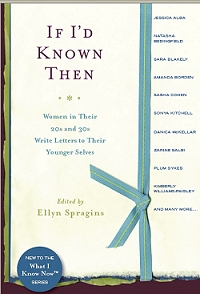 Ellen Spragins gathers more insights. “Spragins’s ingenious book is the rare self-help volume that young women would elect to read and decidedly enjoy. The author profiles 35 highly accomplished women and asks them to write a letter of counsel or encouragement addressed to their younger selves. The result is a collection of life directives that are highly personal and disarmingly honest…. This book offers sound advice and is highly recommended for women just starting out.” — PUBLISHERS WEEKLY “Candid and sometimes surprising letters…It’s hard not to relate to these letters on one level or another…Readers will leave If I’d Known Then inspired to look back on their own lives and write their own missive to themselves.” — DESERET NEWS
Ellen Spragins gathers more insights. “Spragins’s ingenious book is the rare self-help volume that young women would elect to read and decidedly enjoy. The author profiles 35 highly accomplished women and asks them to write a letter of counsel or encouragement addressed to their younger selves. The result is a collection of life directives that are highly personal and disarmingly honest…. This book offers sound advice and is highly recommended for women just starting out.” — PUBLISHERS WEEKLY “Candid and sometimes surprising letters…It’s hard not to relate to these letters on one level or another…Readers will leave If I’d Known Then inspired to look back on their own lives and write their own missive to themselves.” — DESERET NEWS
2008
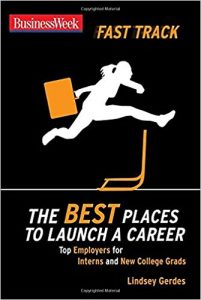 Lindsey Gerdes launched this intriguing idea for up-and-comers.
Lindsey Gerdes launched this intriguing idea for up-and-comers.
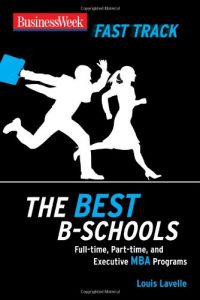
Lou Lavelle, a datameister ahead of his time, pulled together a helpful guide. Aspiring MBAs, no doubt, took note.
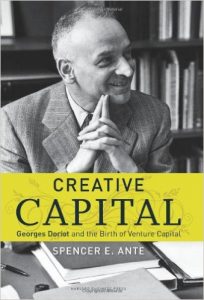 Spencer Ante ventures ahead profitably. “Richly researched with the cooperation of Doriot’s surviving colleagues…” — THE WALL STREET JOURNAL An “ultimately satisfying biography of Georges F. Doriot, the transplanted Frenchman who is often called the father of V.C.” — THE NEW YORK TIMES “This book will appeal to anyone interested in the origins of venture capital, why its centre of gravity moved from the Boston area to the west coast, or what it takes to succeed as a VC investor.” — THE FINANCIAL TIMES
Spencer Ante ventures ahead profitably. “Richly researched with the cooperation of Doriot’s surviving colleagues…” — THE WALL STREET JOURNAL An “ultimately satisfying biography of Georges F. Doriot, the transplanted Frenchman who is often called the father of V.C.” — THE NEW YORK TIMES “This book will appeal to anyone interested in the origins of venture capital, why its centre of gravity moved from the Boston area to the west coast, or what it takes to succeed as a VC investor.” — THE FINANCIAL TIMES
Sandra Dallas nailed another. “An ugly murder is central to this compelling historical, but the focus is on one appealing family, the Strouds, in the backwater town of Ellis, Colo. Soon after Pearl Harbor,  the U.S. government rounded up all the Japanese residents of the West Coast and shipped them off to “internment camps” for the duration of the war. One of the camps is Tallgrass, based on an actual Colorado camp, as Dallas (The Chili Queen) explains in her acknowledgments. The major discomforts and petty indignities these (mostly) American citizens had to endure are viewed through the clear eyes of a young girl who lives on a nearby farm, Rennie Stroud…. Dallas’s terrific characters, unerring ear for regional dialects and ability to evoke the sights and sounds of the 1940s make this a special treat.” PUBLISHERS WEEKLY “Dallas has made a major contribution to a growing body of literature about the internment of Japanese Americans during World War II. Based on the one camp in Colorado (named Amache, and renamed Tallgrass by the author), the story focuses on the impact it had on the local farmers and townspeople….Part mystery, part historical fiction, part coming-of-age story, Tallgrass has all the elements of a tale well told: complex characters, intriguing plot, atmospheric detail, pathos, humor, and memorable turns of phrase. But most of all, the book offers a fresh look at a theme that can never be ignored: the interplay of good and evil within society and within people.” ROBERT SAUNDERSON,Berkeley Public Library, CA, School Library Journal
the U.S. government rounded up all the Japanese residents of the West Coast and shipped them off to “internment camps” for the duration of the war. One of the camps is Tallgrass, based on an actual Colorado camp, as Dallas (The Chili Queen) explains in her acknowledgments. The major discomforts and petty indignities these (mostly) American citizens had to endure are viewed through the clear eyes of a young girl who lives on a nearby farm, Rennie Stroud…. Dallas’s terrific characters, unerring ear for regional dialects and ability to evoke the sights and sounds of the 1940s make this a special treat.” PUBLISHERS WEEKLY “Dallas has made a major contribution to a growing body of literature about the internment of Japanese Americans during World War II. Based on the one camp in Colorado (named Amache, and renamed Tallgrass by the author), the story focuses on the impact it had on the local farmers and townspeople….Part mystery, part historical fiction, part coming-of-age story, Tallgrass has all the elements of a tale well told: complex characters, intriguing plot, atmospheric detail, pathos, humor, and memorable turns of phrase. But most of all, the book offers a fresh look at a theme that can never be ignored: the interplay of good and evil within society and within people.” ROBERT SAUNDERSON,Berkeley Public Library, CA, School Library Journal

Alex Beam has made quite a mark, too. “Alex Beam’s colourful history narrates how this extraordinary project got off the ground at the University of Chicago, under the stewardship of chalk-and-cheese duo Robert Hutchins (who, a friend said, “made homosexuals of us all”) and Mortimer Adler (who “often added his own works to Great Books reading lists for courses he taught”).” STEVEN POOLE, Guardian “Boston Globe columnist Beam looks at how and why this multi-year project took shape, what it managed to accomplish (or not), and the lasting effects it had on college curricula (in the familiar form of Dead White Males). Beam (Gracefully Insane: Life and Death Inside America’s Premier Mental Hospital) describes meetings endured by the selection committee, and countless debates … but tells it like it is regarding the Syntopicon they devised-at “3,000 subtopics and 163,000 separate entries, not exactly a user-friendly compendium”-and the resulting volumes, labeling them “icons of unreadability-32,000 pages of tiny, double-column, eye-straining type.” By lauding the intent and intelligently critiquing the outcome, Beam offers an insightful, accessible and fair narrative on the Great Books, its time, and its surprisingly significant legacy.” PUBLISHERS WEEKLY

Steve Hamm pursued the ideal. “This is a really remarkable book! Covering past, present, and-most excitingly-the future of mobiles, it brings back extremely vivid memories to me and puts in context the many challenges and great opportunities still out there.” JOHN ELLENBY, creator of the GRiD Compass, the first laptop computer “If you have a couple of mobile devices in your pocket and wonder why there isn’t a perfect single device, this book is for you.” ROBERT SCOBLE, the Scobleizer blog and former chief blogger for Microsoft
Giles Blunt ventured into the youth market. “Blunt presents readers with a well-crafted plot and lovable, eccentric characters who are magnetizing from page one. Teens will fall in love with this handsome, insightful 18-year-old and his questionable girlfriend, and will be charmed by this quirky, fast-paced tale.” ELLEN BELL, Amador Valley High School, Pleasanton, CA

Steve Baker did some close counting on this one. “In this captivating exploration of digital nosiness, business reporter Baker spotlights a new breed of entrepreneurial mathematicians (the numerati) engaged in harnessing the avalanche of private data individuals provide when they use a credit card, donate to a cause, surf the Internet—or even make a phone call…. An intriguing but disquieting look at a not too distant future when our thoughts will remain private, but computers will disclose our tastes, opinions, habits and quirks to curious parties, not all of whom have our best interests at heart.” PUBLISHERS WEEKLY “This is a fascinating outing of the hidden yet exploding world of digital surveillance and stealthy intrusions into our decision-making processes as we buy food, make a date, or vote for president. Yet, as Baker assures us, we are not helpless. For one thing, machines still can’t process sarcasm. Read and resist.” DONNA SEAMAN, Booklist

Michael Mandel waxed academic. Another text I use in my biz-econ journalism class. Need you know more?

Fran Hawthorne shares retirement worries. “Will retirement security be an oxymoron for most Americans? Fran Hawthorne’s Pension Dumping offers a clear-eyed, provocative look at the critically important world of pensions.”
—BARBARA RUDOLPH, author. “Having lived through the S&L crisis, I can’t help but wonder what policy makers might have done had they been presented with a concise, cogent description of the gathering of the perfect storm before events unfolded. Fran Hawthorne has written such a book for pension policy makers.”—OLENA BERG LACY, former Assistant Secretary of Labor for the Pension and Welfare Benefits Administration. “With clarity and even humor at times, Hawthorne examines a complicated, multifaceted, and often troubling phenomenon with broad current and future implications for companies, workers, retirees, taxpayers, and society as a whole.”—PHYLLIS C. BORZI, former Counsel for Employee Benefits, U.S. House of Representatives
 Stephen Adler and Lisa Grunwald team up as editors on this one. “Leaving few stones unturned, the husband-and-wife journalist team of Grunwald and Adler (a former Esquire features editor and a Wall Street Journal assistant managing editor, respectively) have compiled a riveting epistolary chronicle of 20th-century America. Comprising 423 letters that are by turns intimate, bureaucratic, officious and epoch-defining…” – PUBLISHERS WEEKLY. “Letters to lovers, threats from gangsters, pleas to judges for mercy, tracts from terrorists, junk mail from evangelists, advice from Ann Landers, even young JFK’s message carved on a coconut after PT-109 was sunk–all combine to provide one of the most authentic, resonant, and real histories imaginable, a sweeping and often intensely personal chronicle of the American 20th century, as told by the famous, the infamous, and the obscure. – PAUL HUGHES, Amazon.com
Stephen Adler and Lisa Grunwald team up as editors on this one. “Leaving few stones unturned, the husband-and-wife journalist team of Grunwald and Adler (a former Esquire features editor and a Wall Street Journal assistant managing editor, respectively) have compiled a riveting epistolary chronicle of 20th-century America. Comprising 423 letters that are by turns intimate, bureaucratic, officious and epoch-defining…” – PUBLISHERS WEEKLY. “Letters to lovers, threats from gangsters, pleas to judges for mercy, tracts from terrorists, junk mail from evangelists, advice from Ann Landers, even young JFK’s message carved on a coconut after PT-109 was sunk–all combine to provide one of the most authentic, resonant, and real histories imaginable, a sweeping and often intensely personal chronicle of the American 20th century, as told by the famous, the infamous, and the obscure. – PAUL HUGHES, Amazon.com
FOR WORK BY BW AUTHORS FROM 2007 AND EARLIER SEE NEXT POST













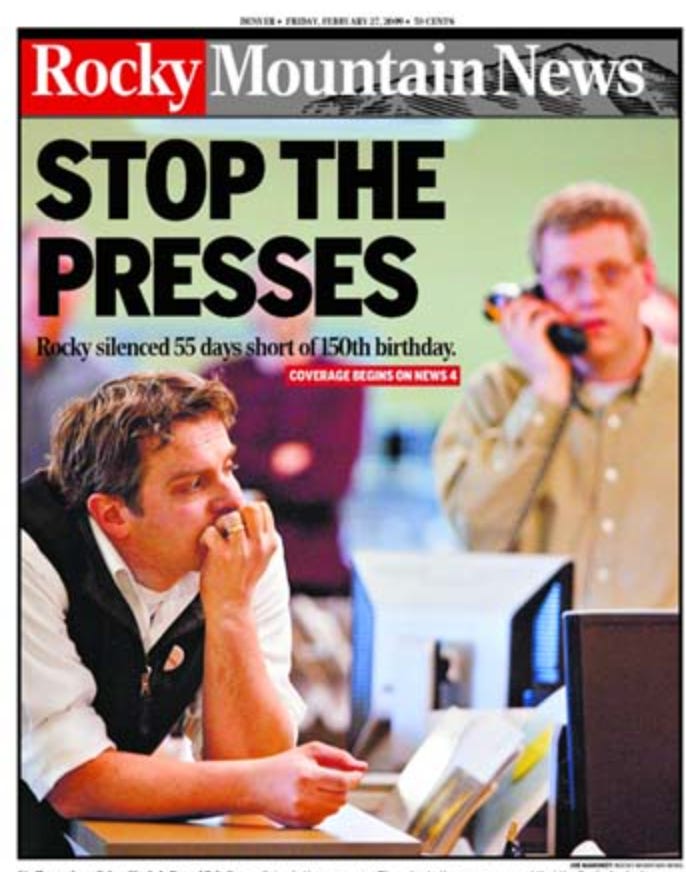
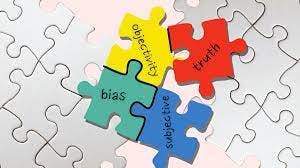


















































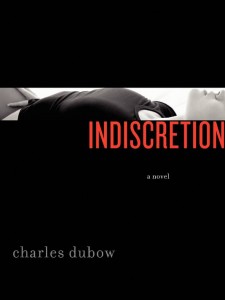












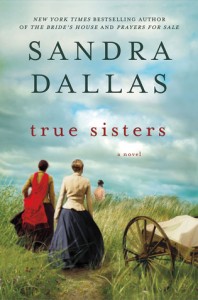
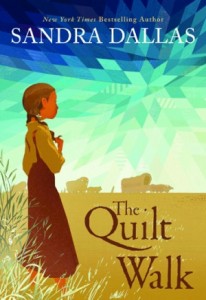
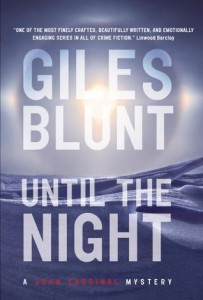











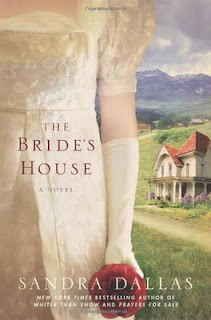
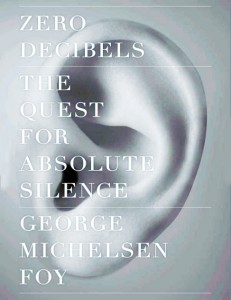




















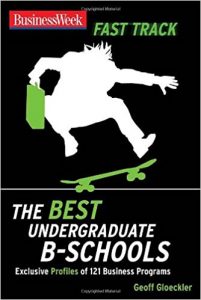
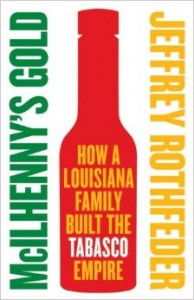

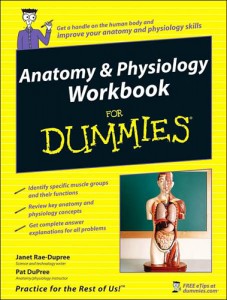
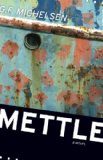
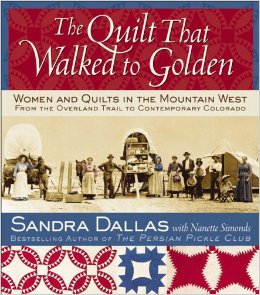
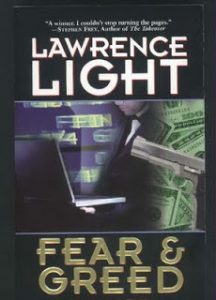
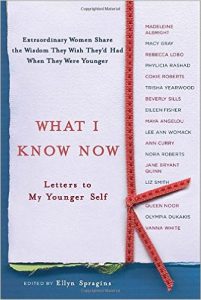
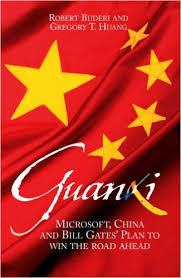
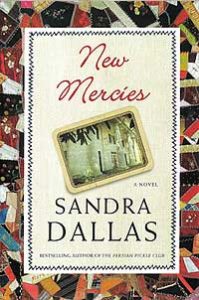
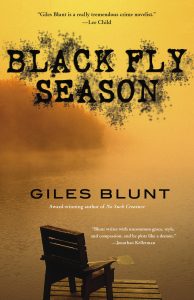


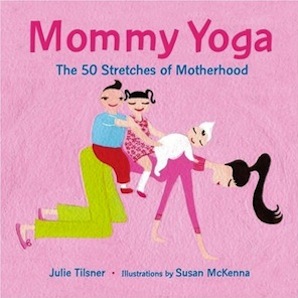

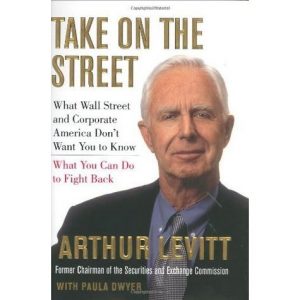

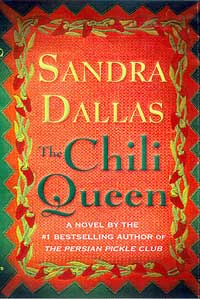
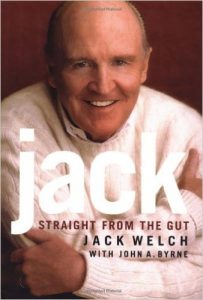

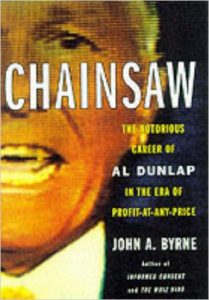
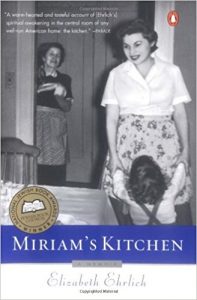
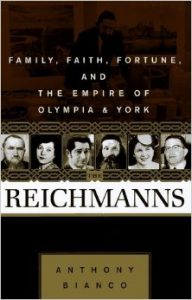 Anthony Bianco
Anthony Bianco